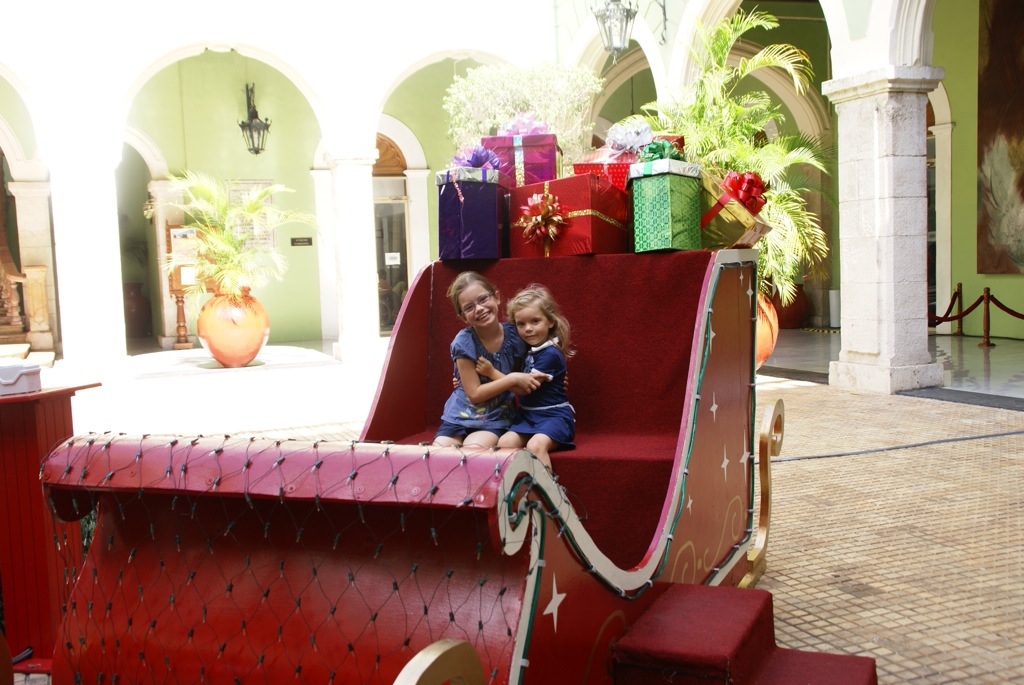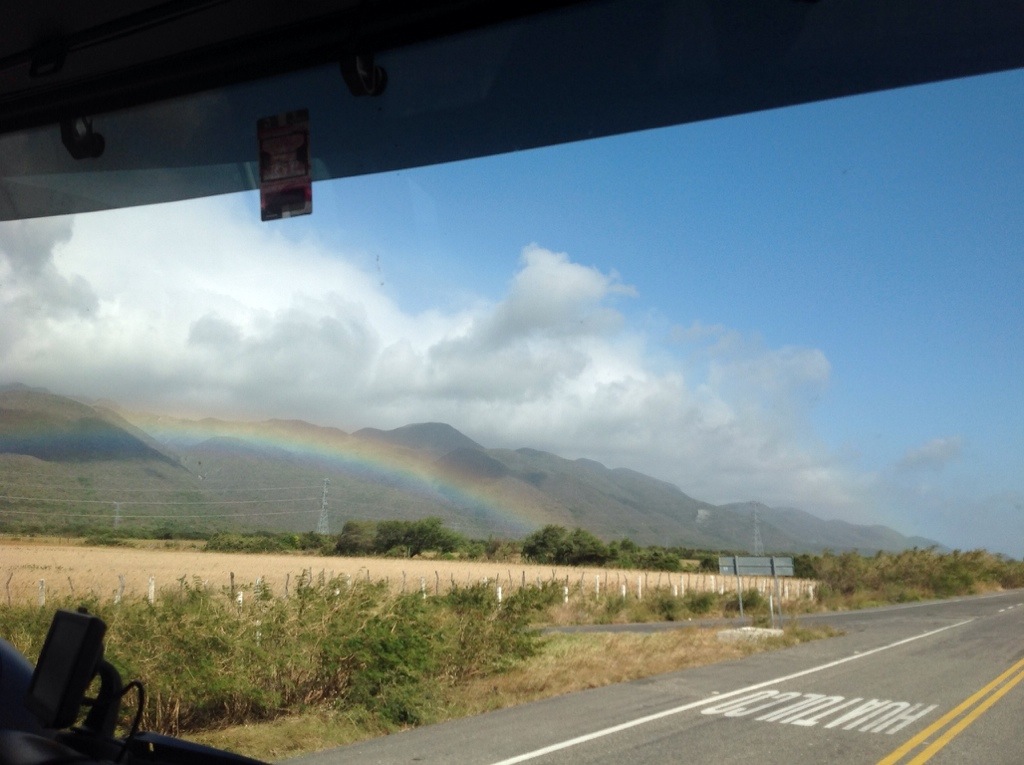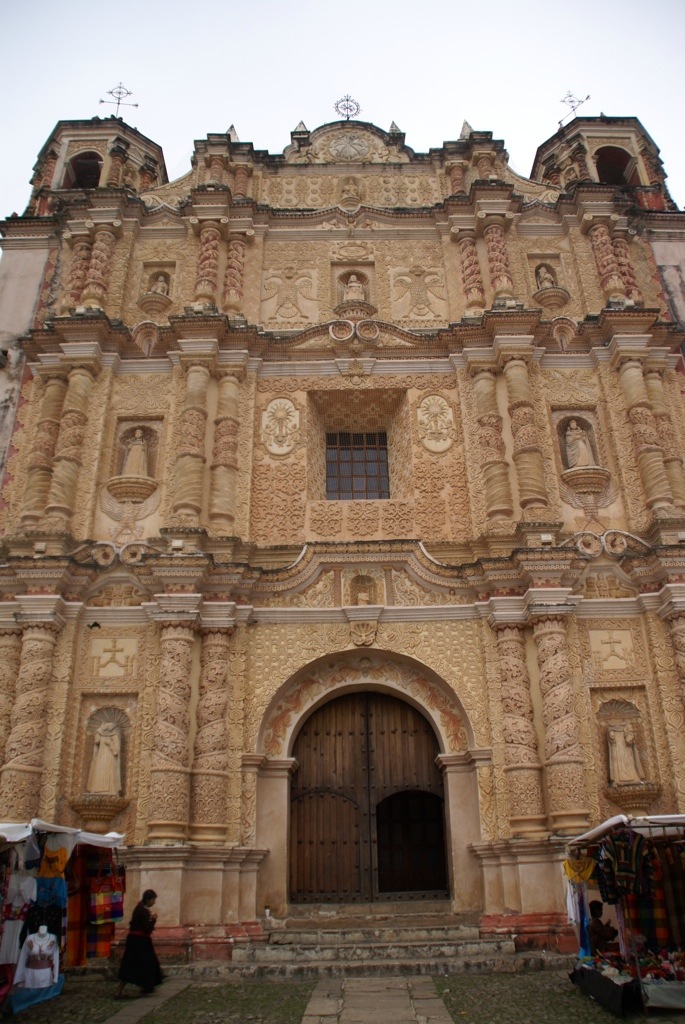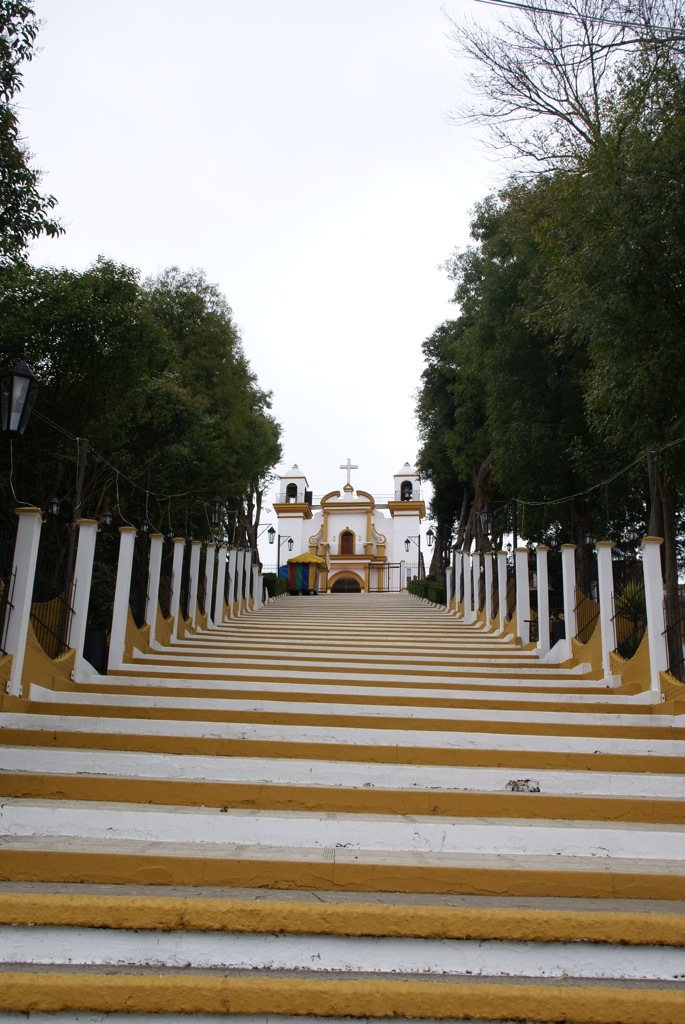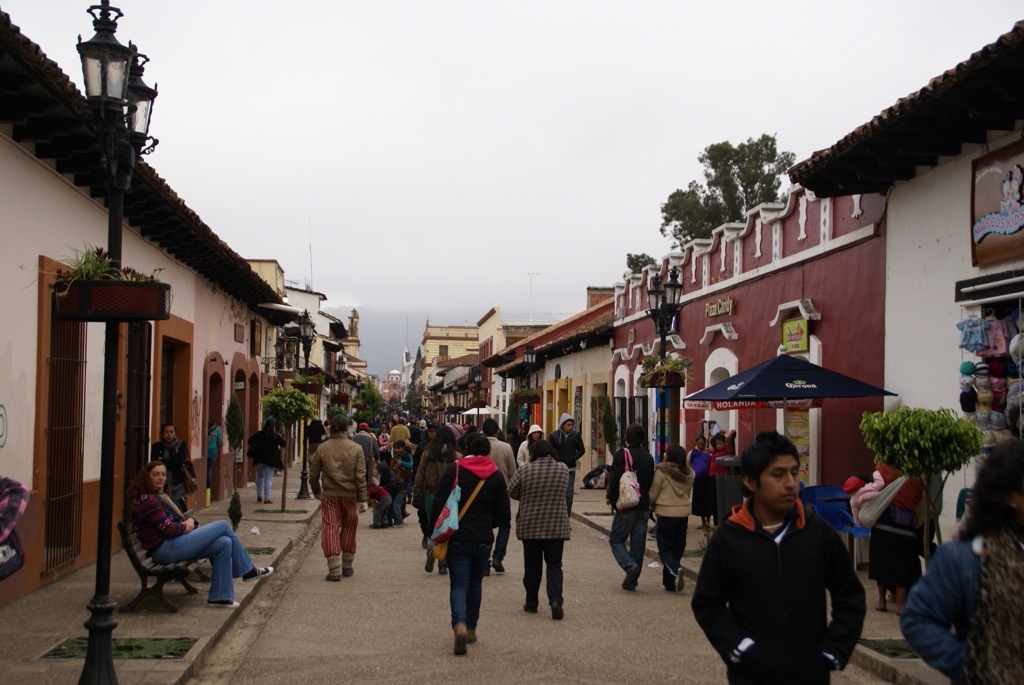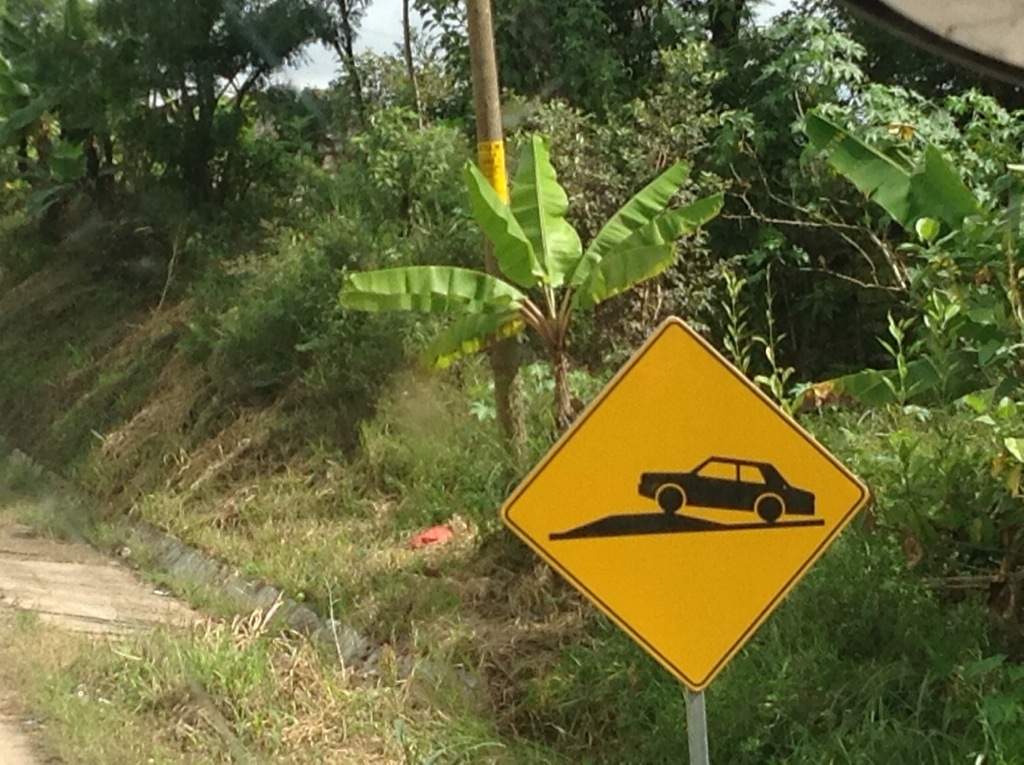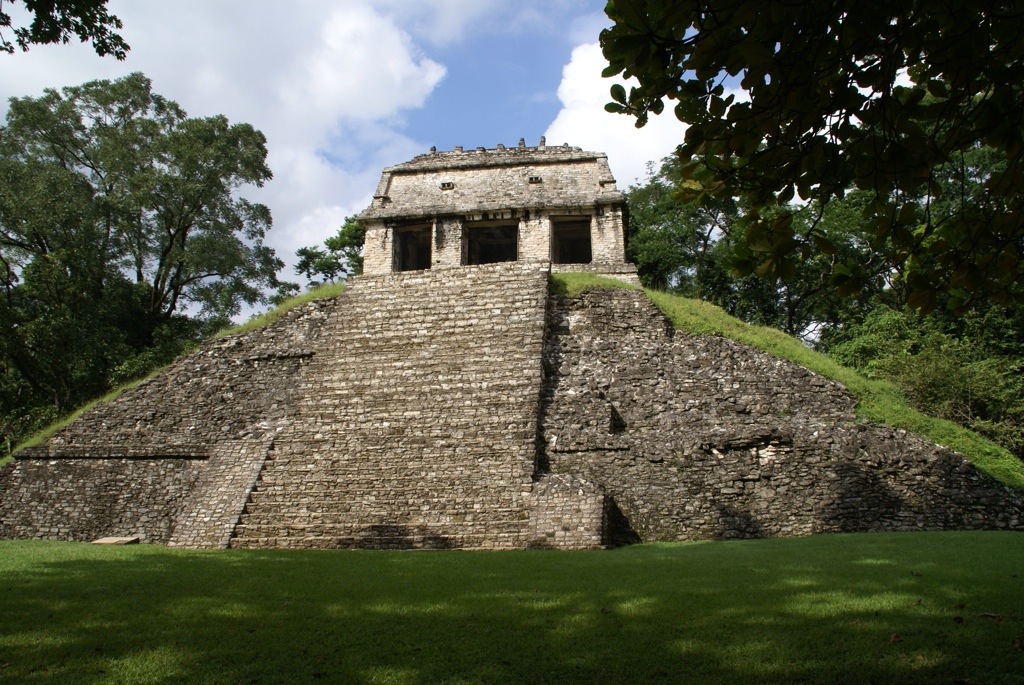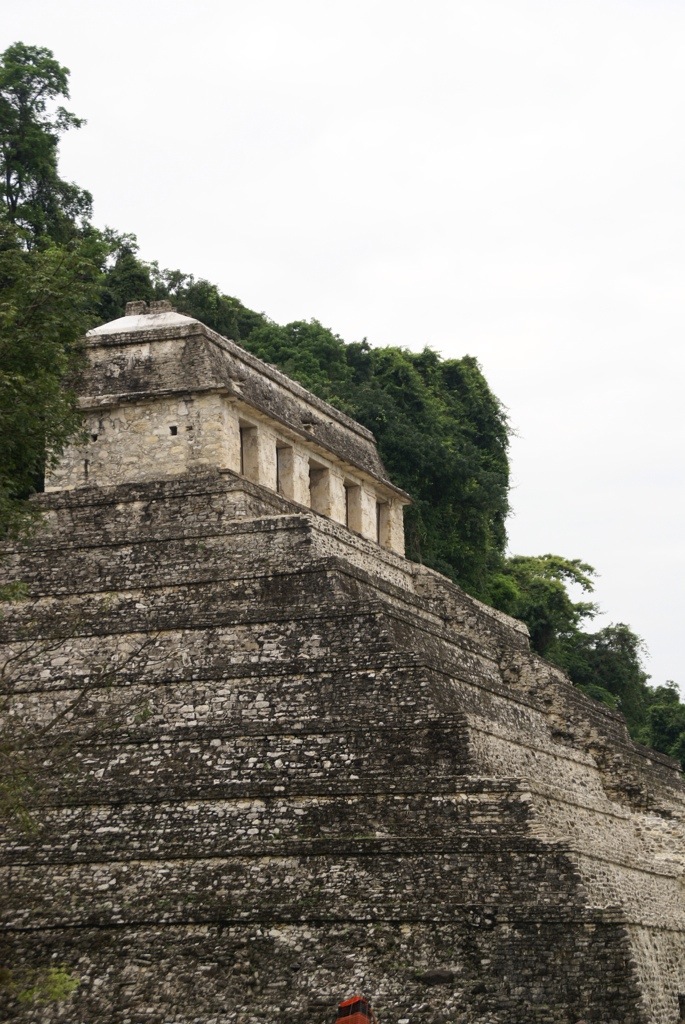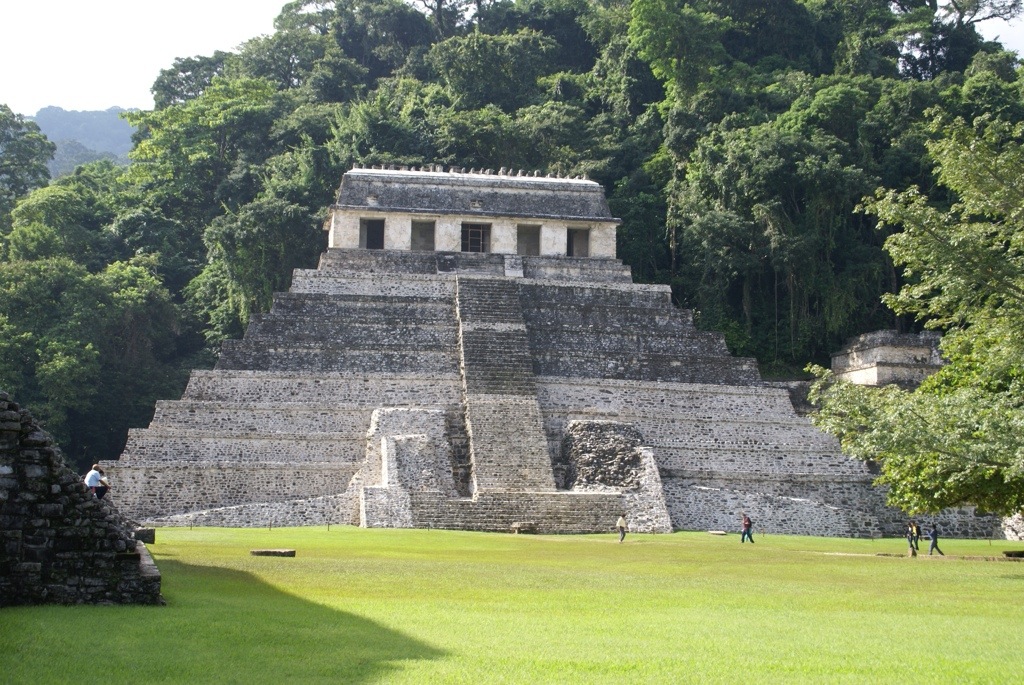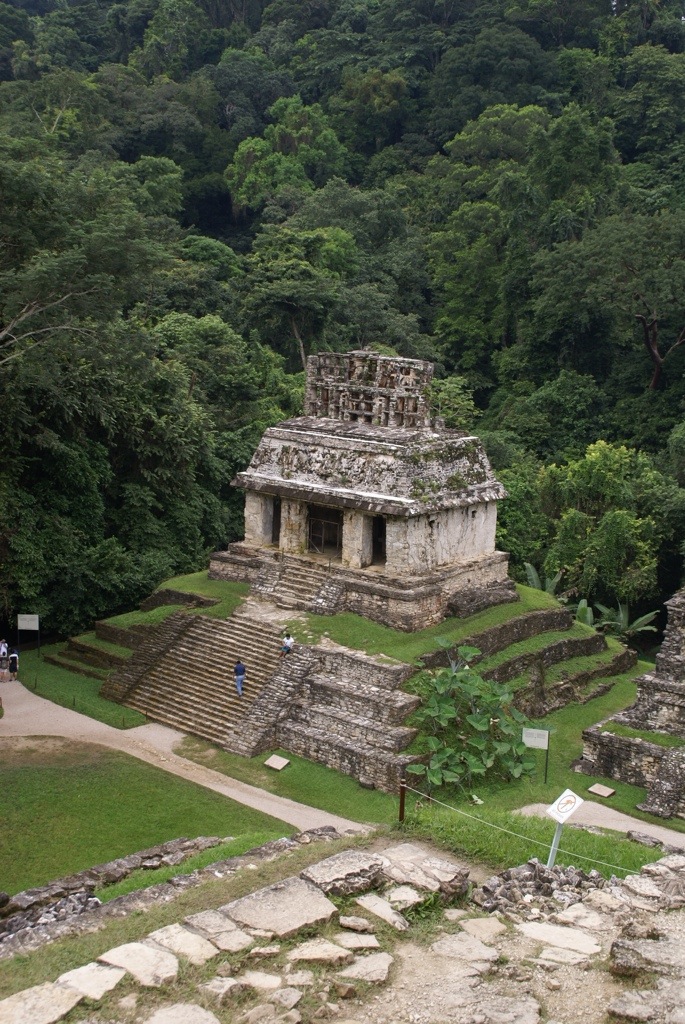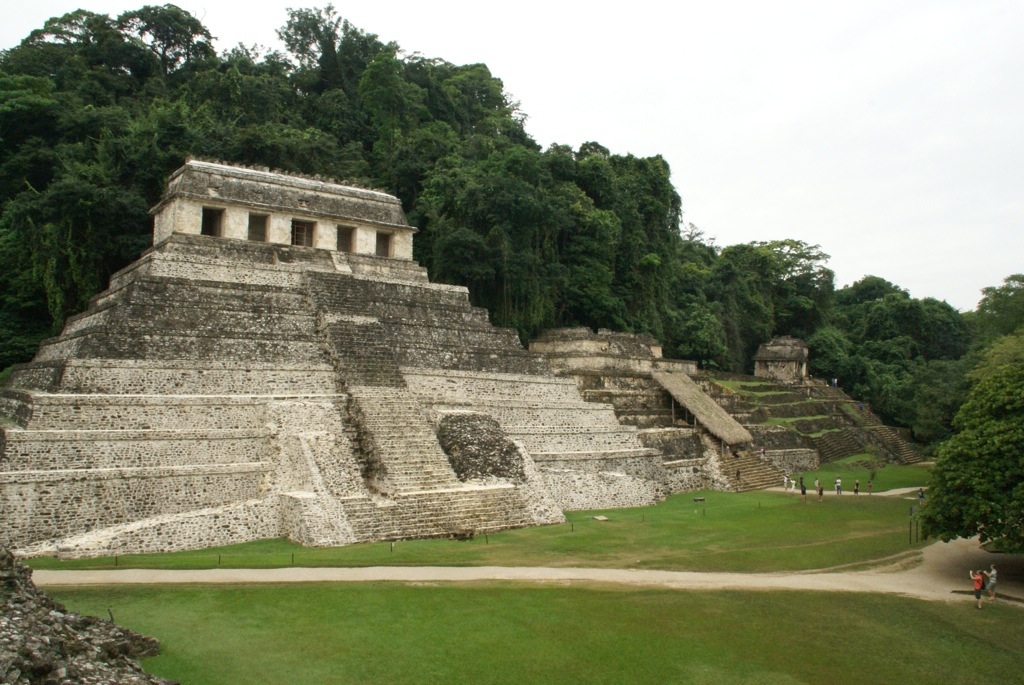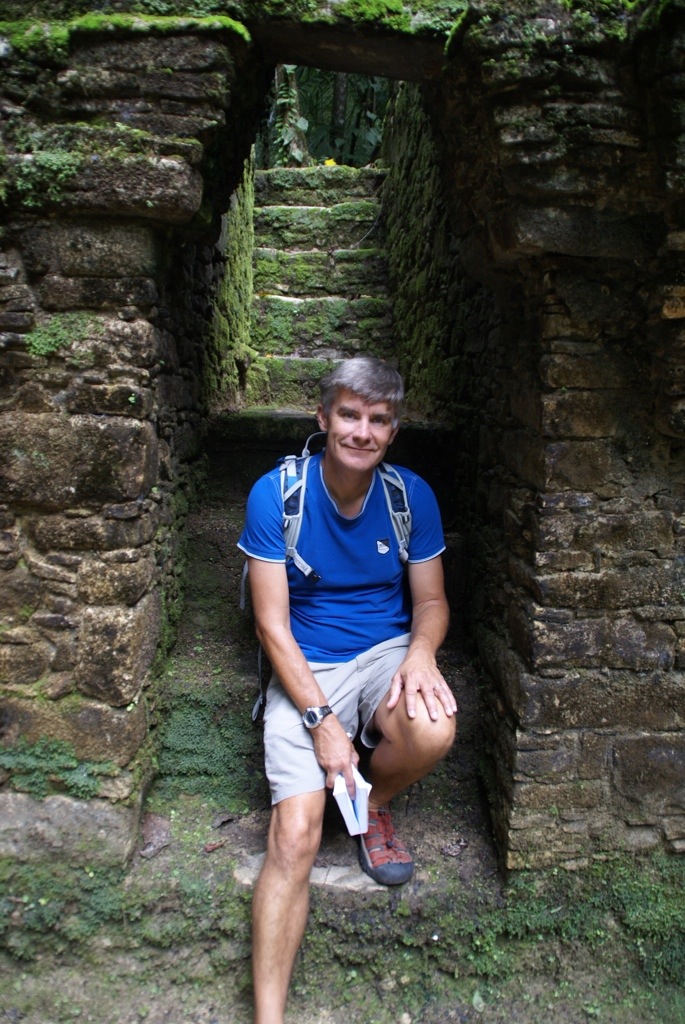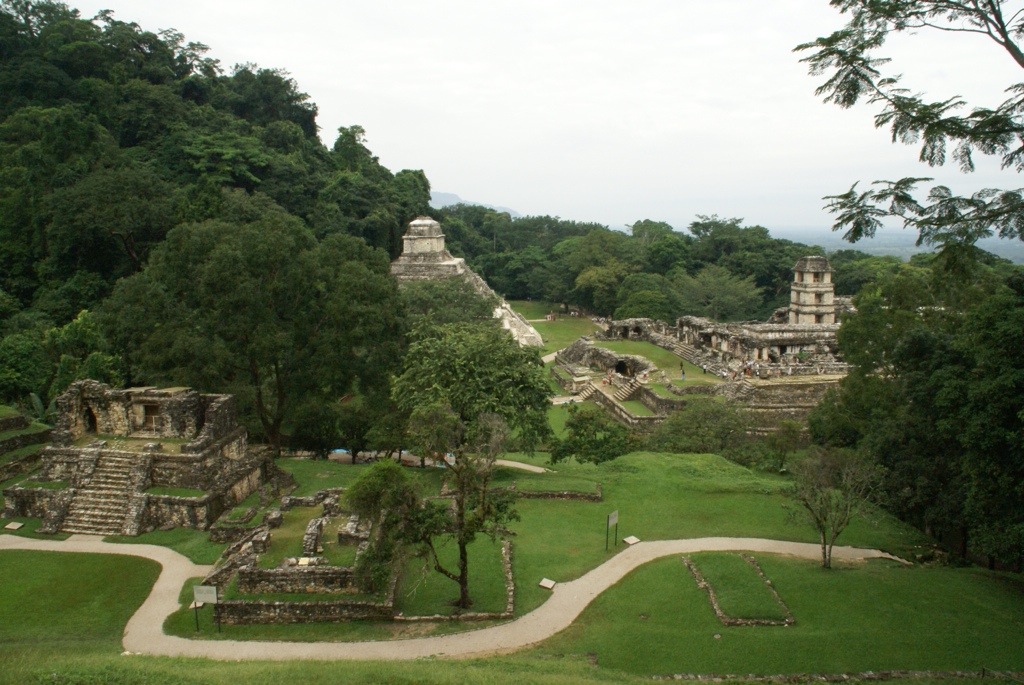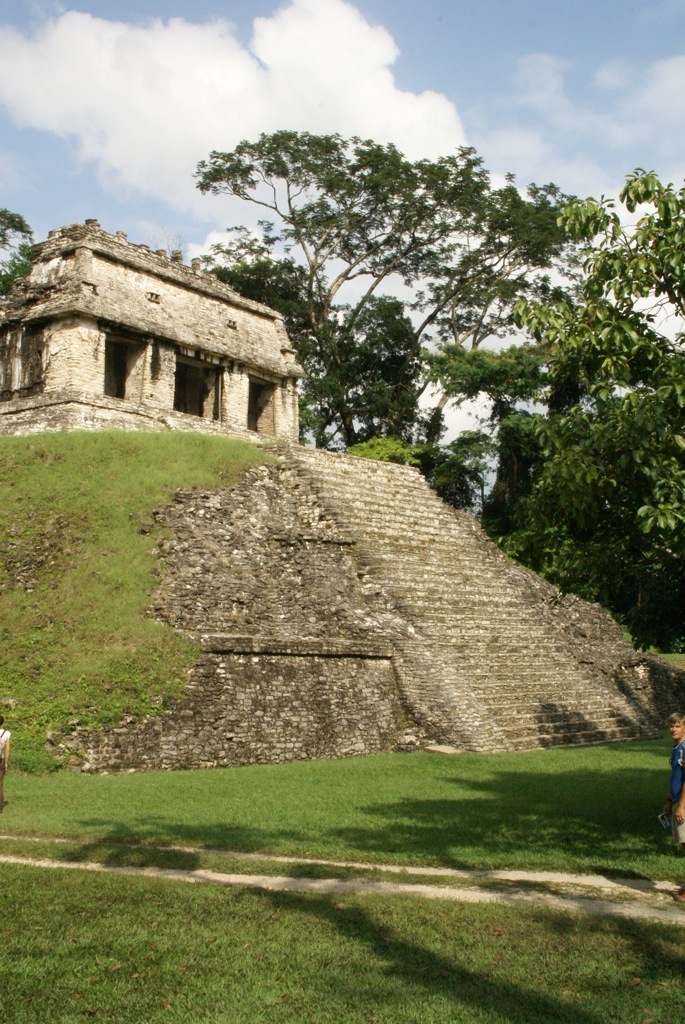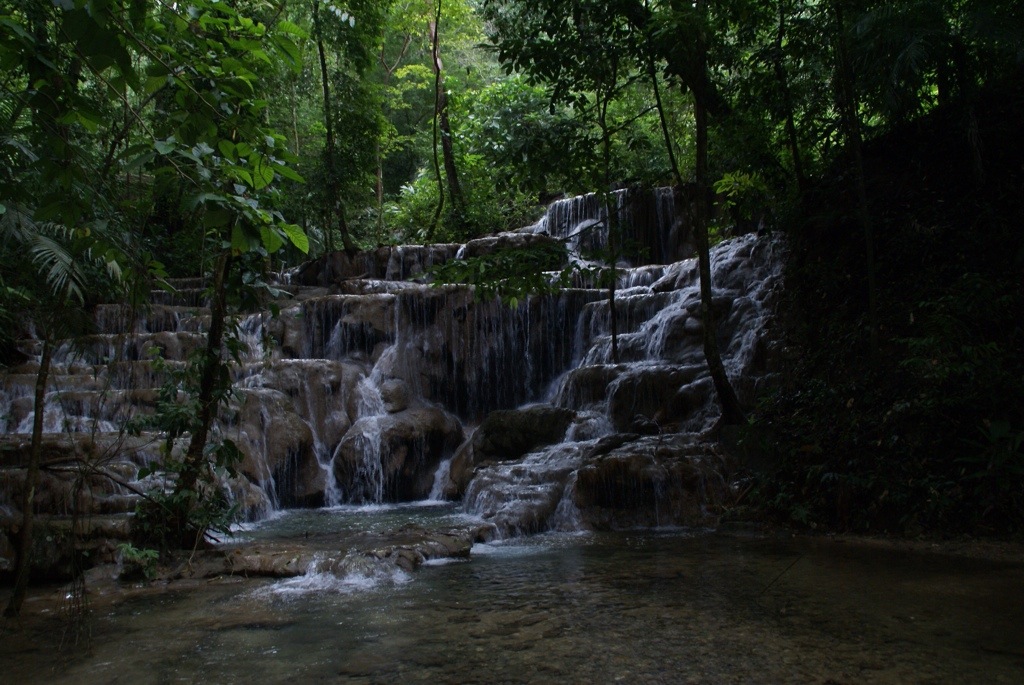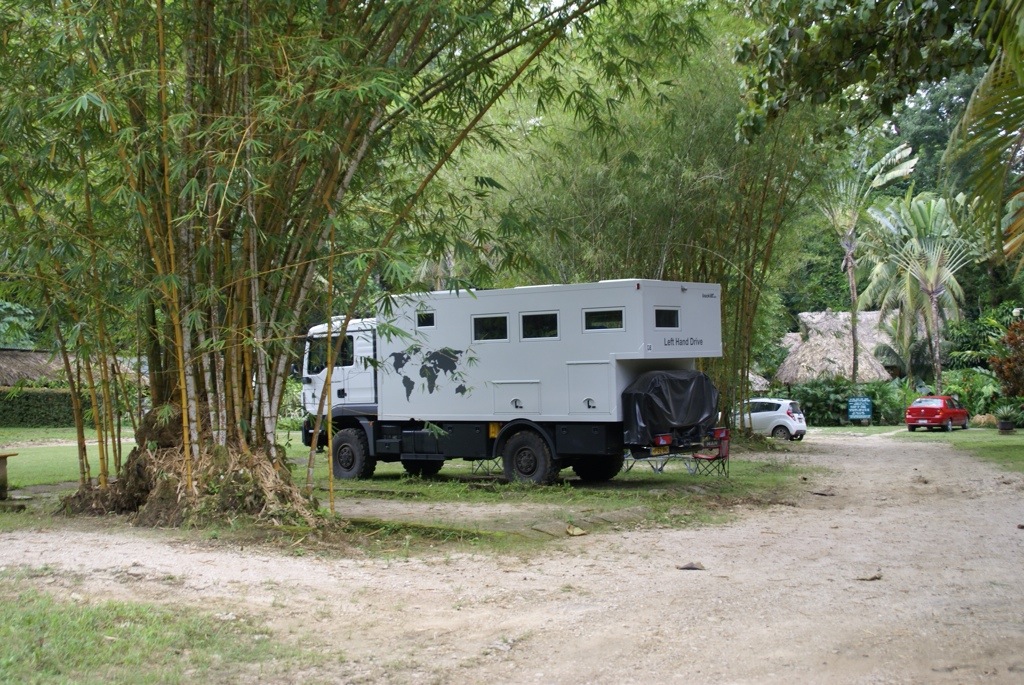The last few days have fully cemented our love of Mexican food. From eating out less than once week in the US and Canada, we've now moved to eating out at least once a day. We've spent most of the last week in cities or near them which has given us ample opportunities to try lots and lots of new dishes. It is so different, and so much better, than the tex-mex food we'd eaten in restaurants in Europe.
We camped outside the city of Puebla in the small town of Cholula. The threat of an approaching thunderstorm hurried us through the small tunnels dug by archeologists under the worlds largest pyramid.
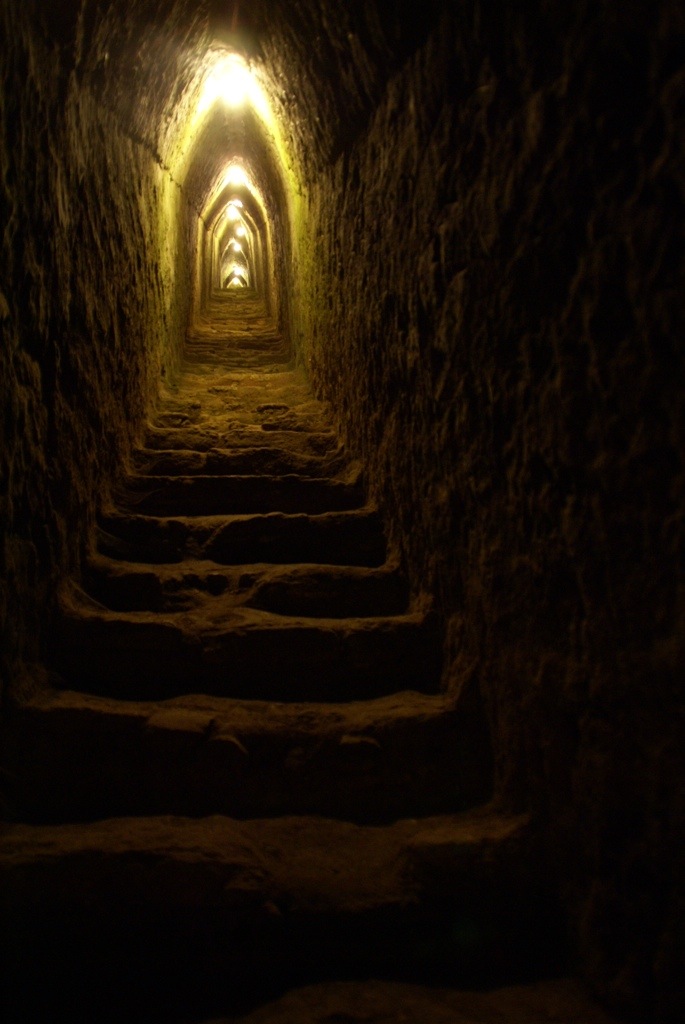
The pyramid is still covered by trees and grass, so it doesn't look as impressive as some of the smaller uncovered ones.The Spanish built a church on top, whether this was to show their ultimate power over the subdued locals after the invasion, or if they had not realised that the hill was a overgrown ancient pyramid, no one knows.
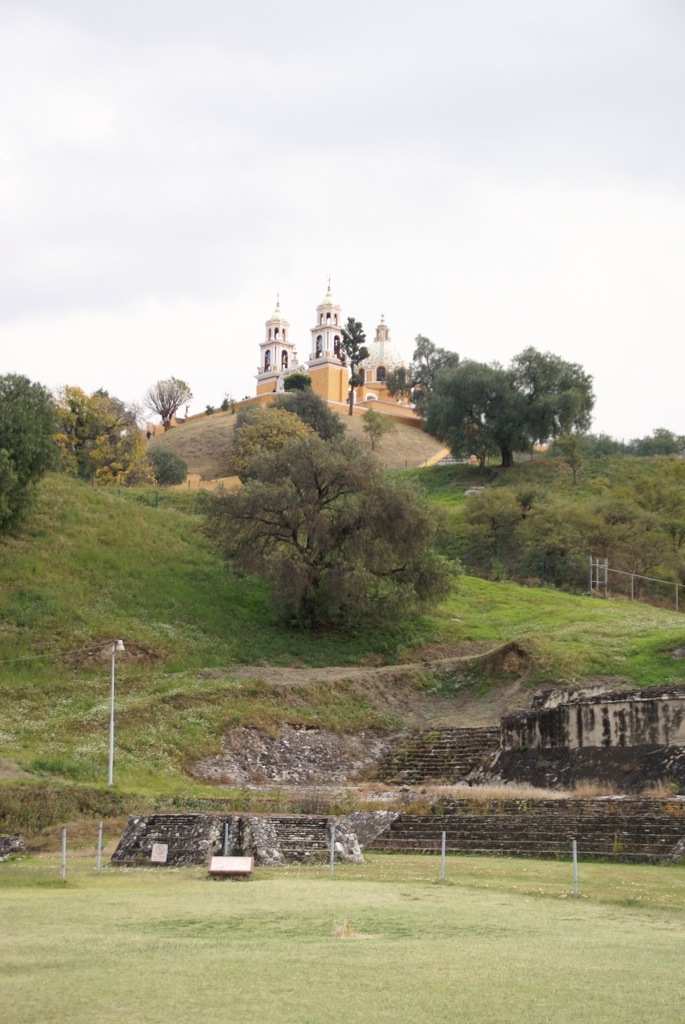
The following day we headed off to Puebla in a taxi to have a look around and try out a new food market stuffed with vendors cooking local specialities. It gave everyone a chance to try something different. Sorry but we were too busy stuffing our faces to take photos of the delicious dishes.
Puebla was an attractive city with a pretty central square, lots of churches and pretty buildings covered in painted tiles.
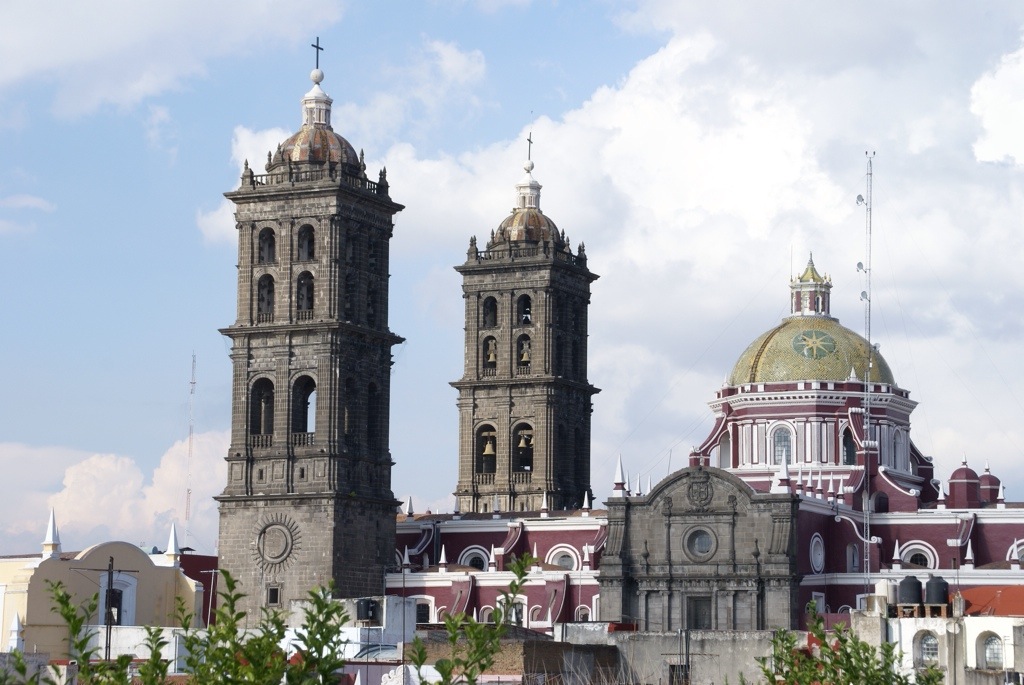
We'd heard about a new campsite near Oaxaca in Tule from some overlanders in Cholula: www.overlanderoasis.com which turned out to be lovely and is a great spot for overlanders to park up and base themselves for a visit to Oaxaca. They have space for just a few vehicles but it is lovely and clean and the Canadian owners Leanne and Calvin were so welcoming. We were just settling in and checking Facebook when I saw a post from: De uma America a Outra saying "On the way to Oaxaca". They are a Brazilian couple from Canada with their 5 year old daughter Olivia. We had met them for just half an hour in Baja and had hoped to see them again somewhere on the way, especially as the girls got on so well even in the brief time they were together. I'd just pressed send on a message to them, telling them that we'd just arrived in Oaxaca too, when their camper pulled in front of the campsite. The rest of the day was spent chatting and playing.
Oaxaca is famed throughout Mexico for its cuisine, so it seemed a good place to take a cooking course. We've eaten so many delicious things but haven't a clue on how to prepare them ourselves. The Brazilians: Marcia, Andre and Olivia joined us for the 4 hour course at Casa Crespo, along with four friendly others. First, a trip to the market not only introduced us to a whole pantheon of fruit and vegetables that we'd never seen before but we also picked out the ingredients for the feast we were about to cook.
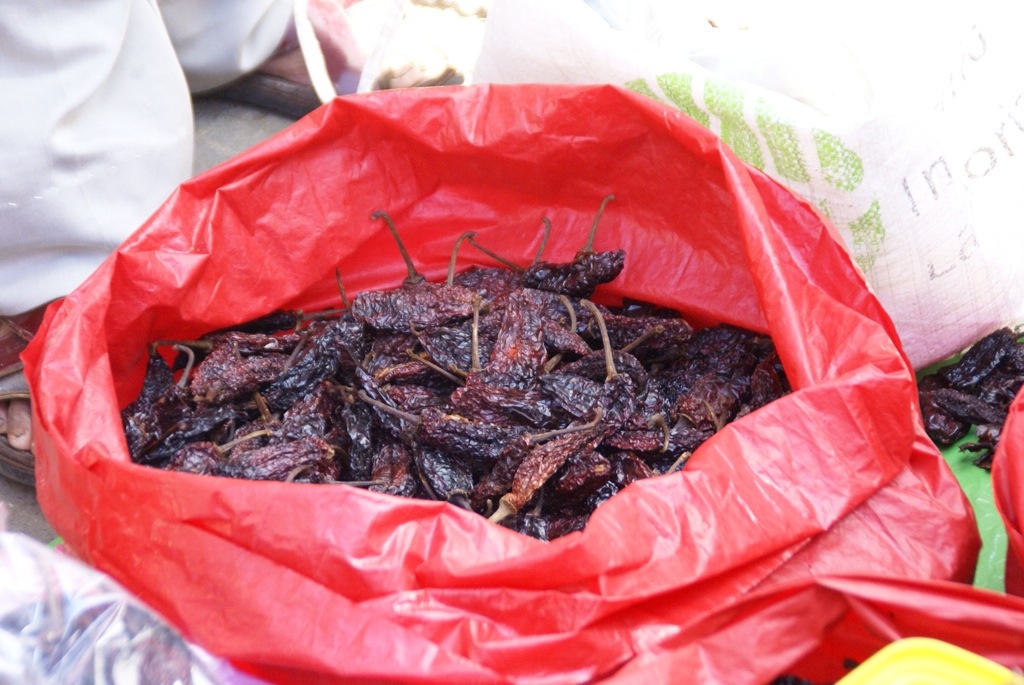
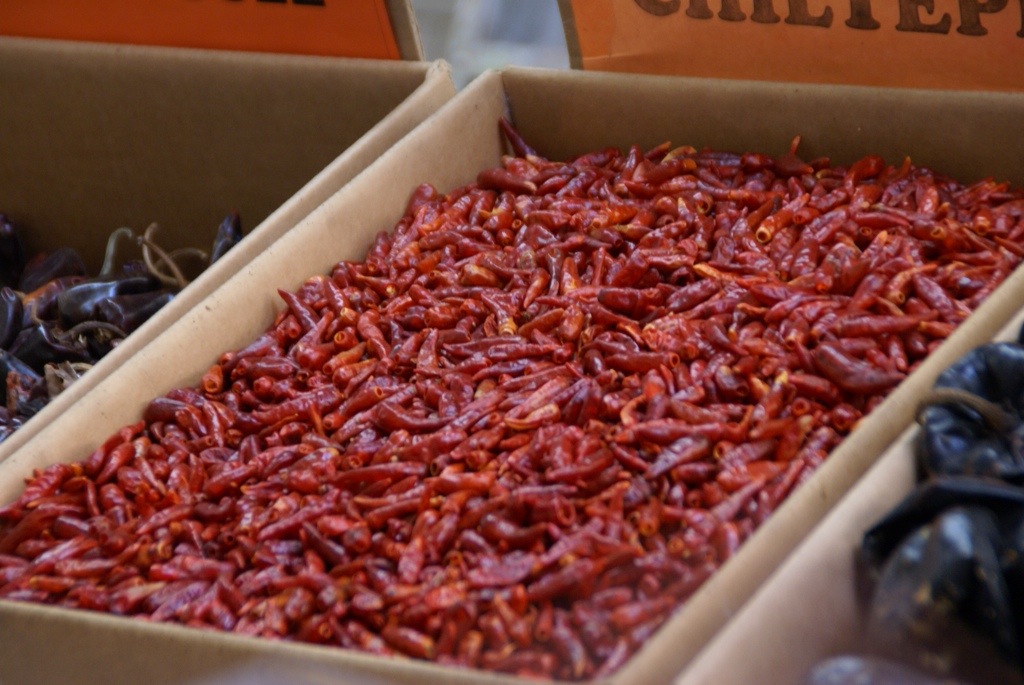

In the market we got a chance to try one of the local delicacies, grasshoppers fried in lime, chilli and garlic. Lucy was keen to give them a try but found them too garlicky for her tastes.
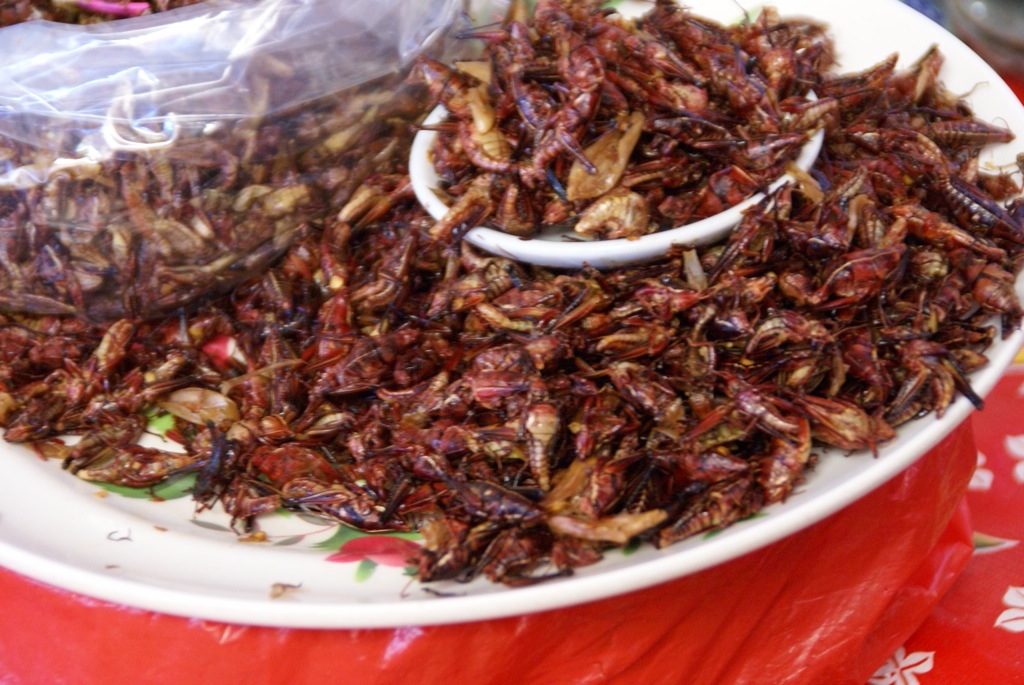

Back at the restaurant the meal preparation progressed at a great rate. We cooked 4 types of salsa including one flavoured with the worm that is found at the bottom of a mezcal bottle. A refreshing drink of cucumber, lime and just a touch of chilli. Guacamole, normal tortillas and tortillas flavoured with courgette flowers. Quesadillas with cheese and grasshoppers and herbs.
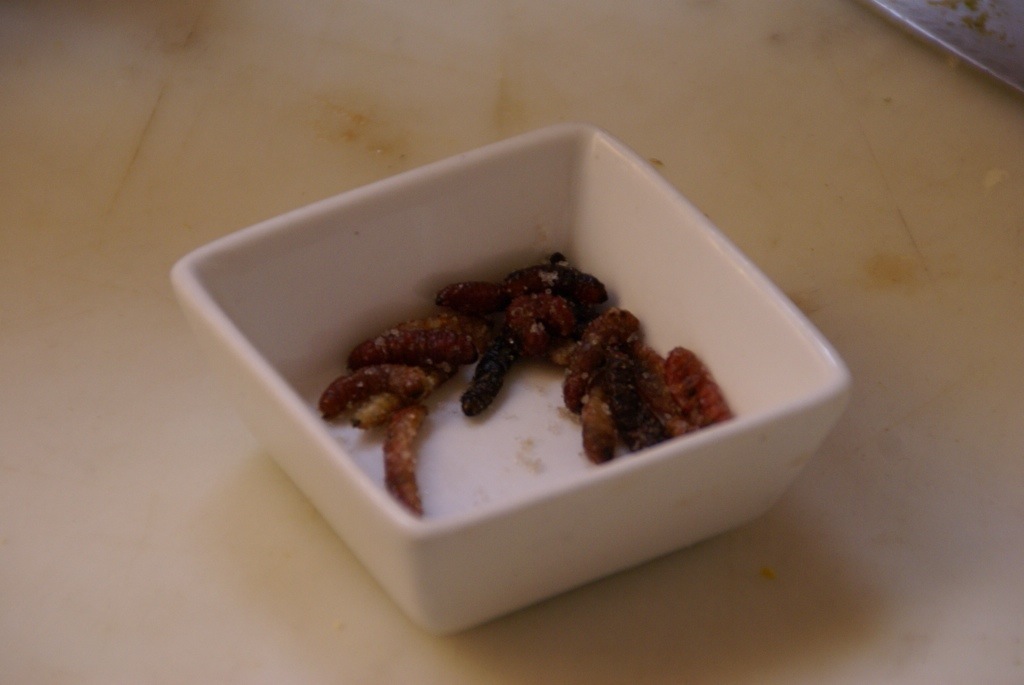
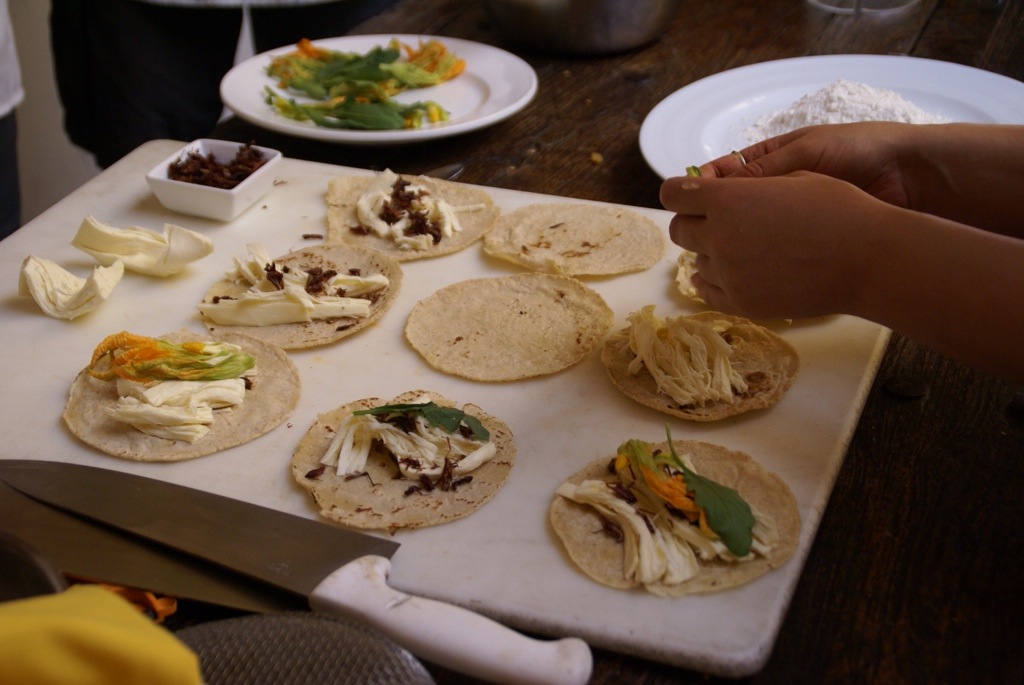
A special type of shrimp soup cooked with a hot stone dropped in just before serving.
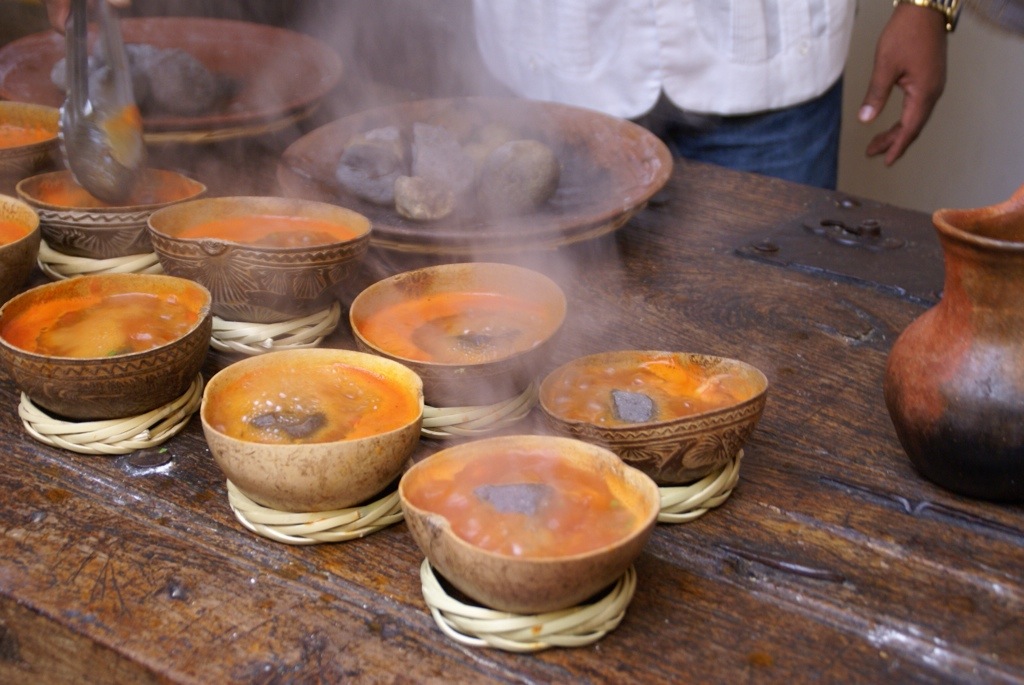
The piece de resistance was the famed Oaxacan mole, Oscar the chief, rattled off about 10 different types that we could prepare but we chose the special mole for parties, wedding and funerals. This sweet, tasty sauce with a kick can be served over any type of meat. I think I counted 17 different ingredients including chocolate. It all had to be fried individually, blended and then cooked and reduced for over an hour. Luckily we had a sous chef to help with that part. It might not be the easiest thing for a quick supper after a day on the road but it was delicious.
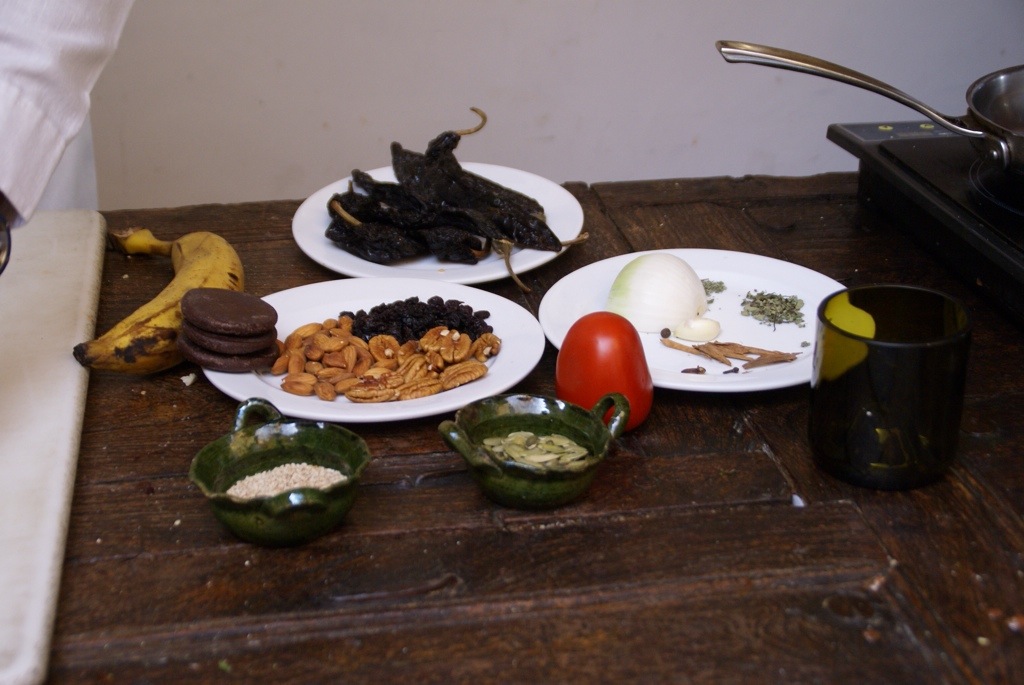
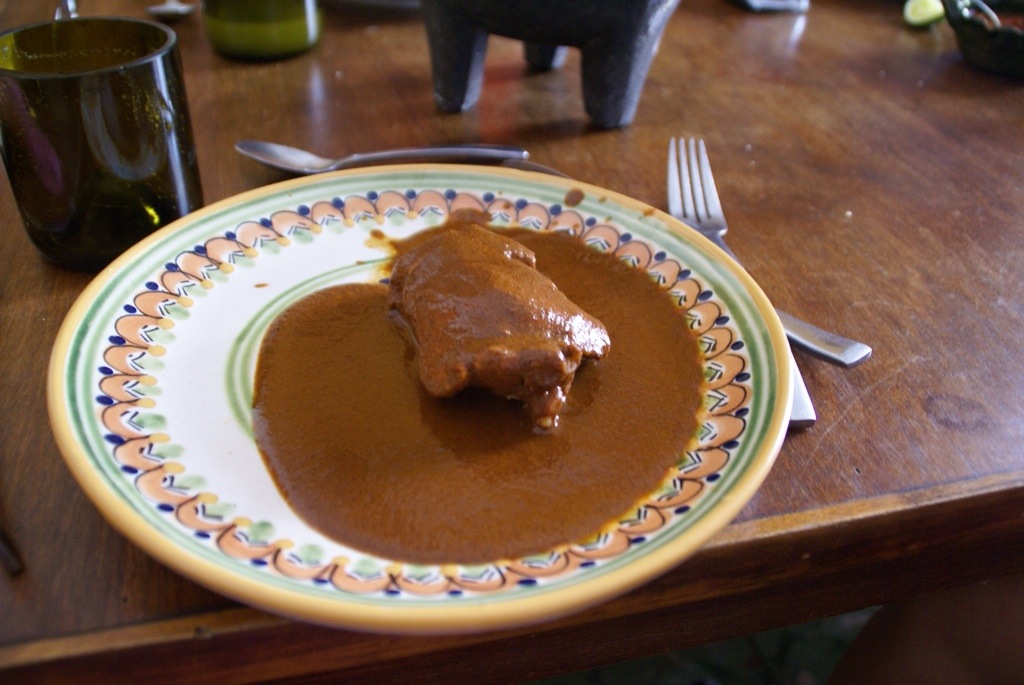
A drink on the terrace, put us in a good mood for a delicious, long lunch. The three girls were brilliant throughout playing happily in a corner, until it was time to make the chocolate ice cream, made with rich Oaxacan chocolate, suddenly Lucy found a keen interest in the cooking process.


We staggered back to Tule with very full bellies to see the worlds widest tree in their central plaza. It is supposedly over 2000 years old and totally dwarfed the church beside it.

The following day we headed into Oaxaca to look around, it is gorgeous historic town. In the colectivo taxi in the way into town with the Brazilians again, with 7 of us we easily fill one of the shared taxis that run into town, we got talking about tamales. Steve has been itching to taste this morning snack of maize paste filled with a variety of fillings and sauces, wrapped in a corn husk and steamed. On a mission once in town as it was now nearing midday, we asked where the best place to get them and searched the nearby market to find the ladies tucked down an alley with their still warm bundles. All the different types were delicious, as were the empanadas.
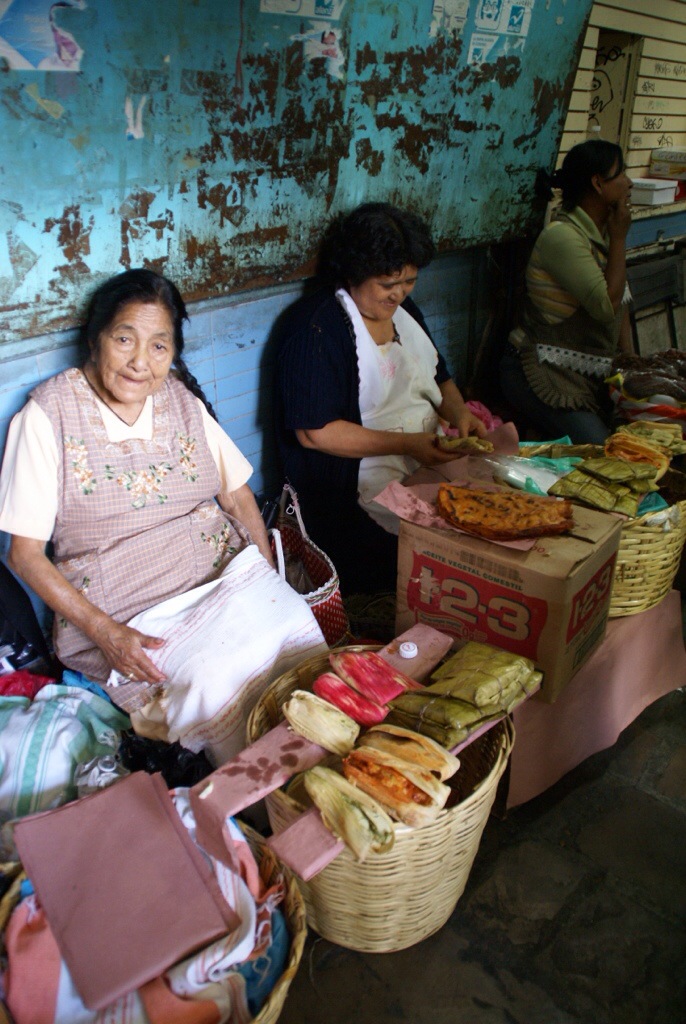
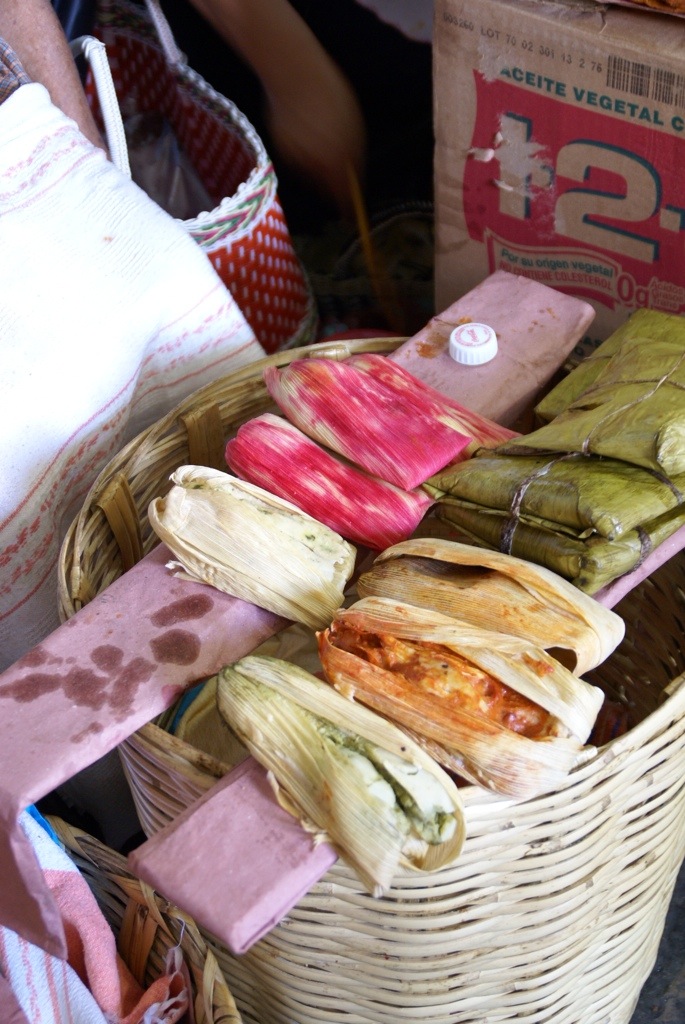
We were then fully fuelled for an afternoon of churches, looking around and museums. We saw a rather fancy wedding where the helpers were dressed in beautifully embroidered Oaxacan costumes, they were happy to pose for a photo outside the church. Later the same wedding party had a band and dancers leading the guests to the reception and we managed to get close enough to see them properly once all the guests went in.
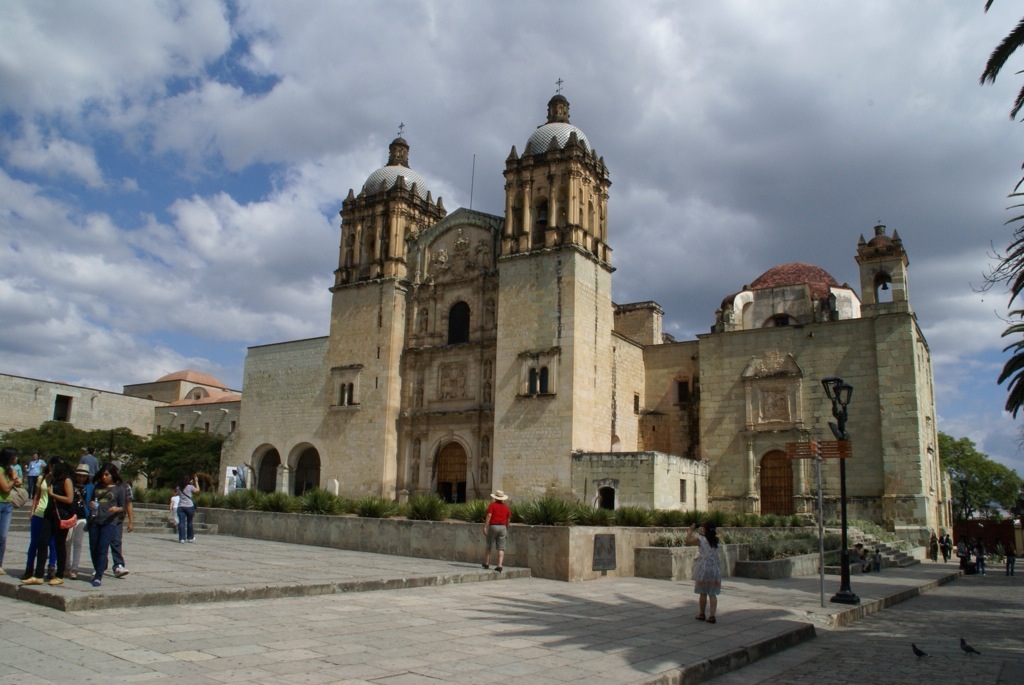
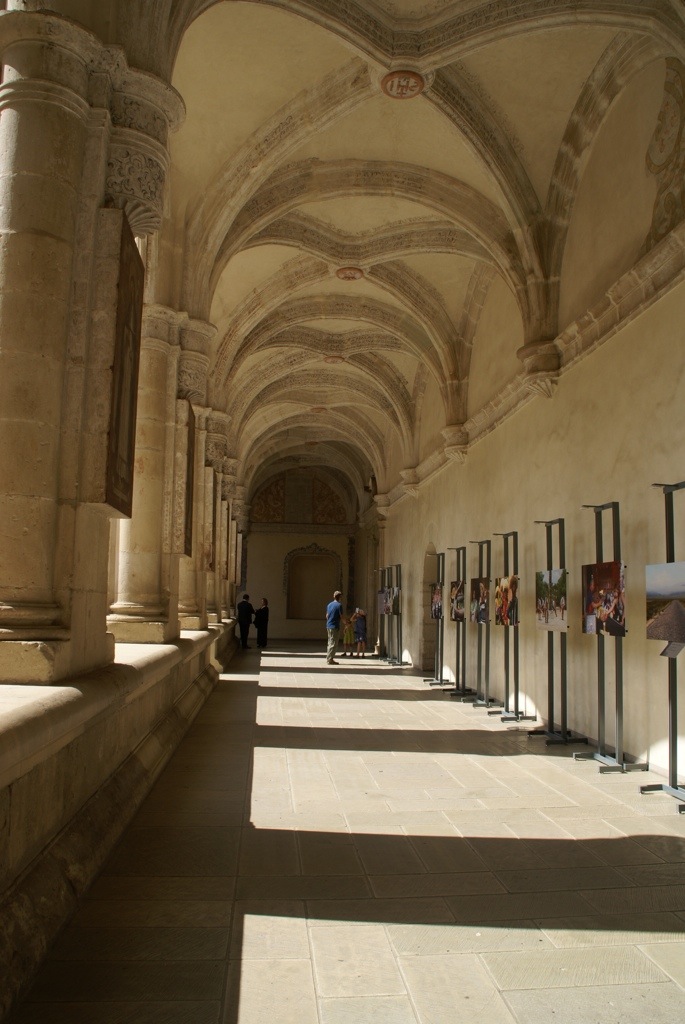
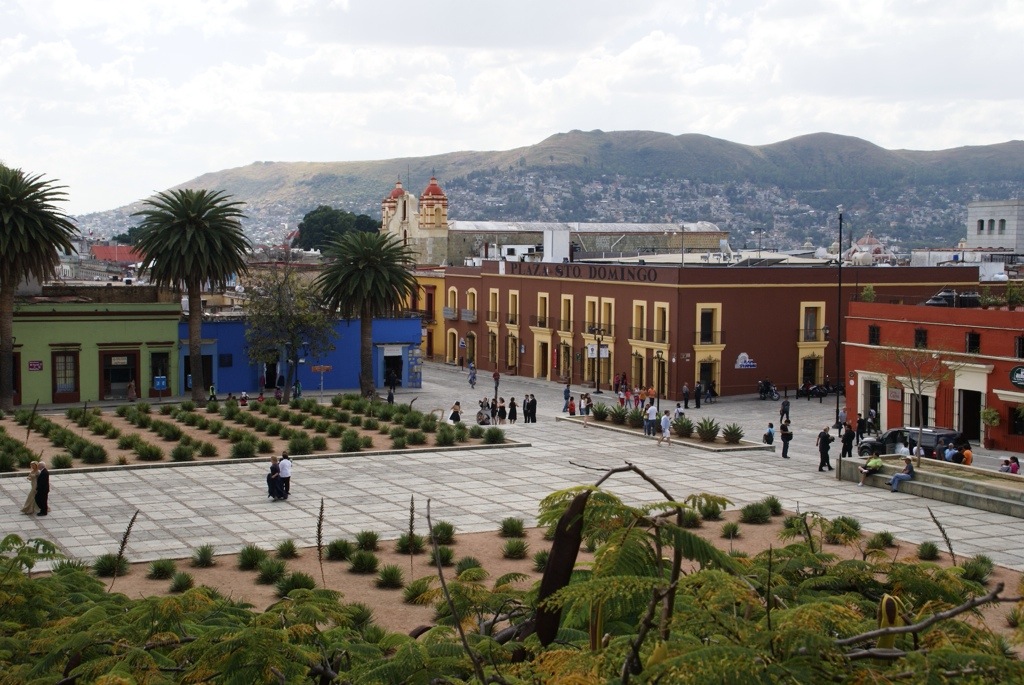
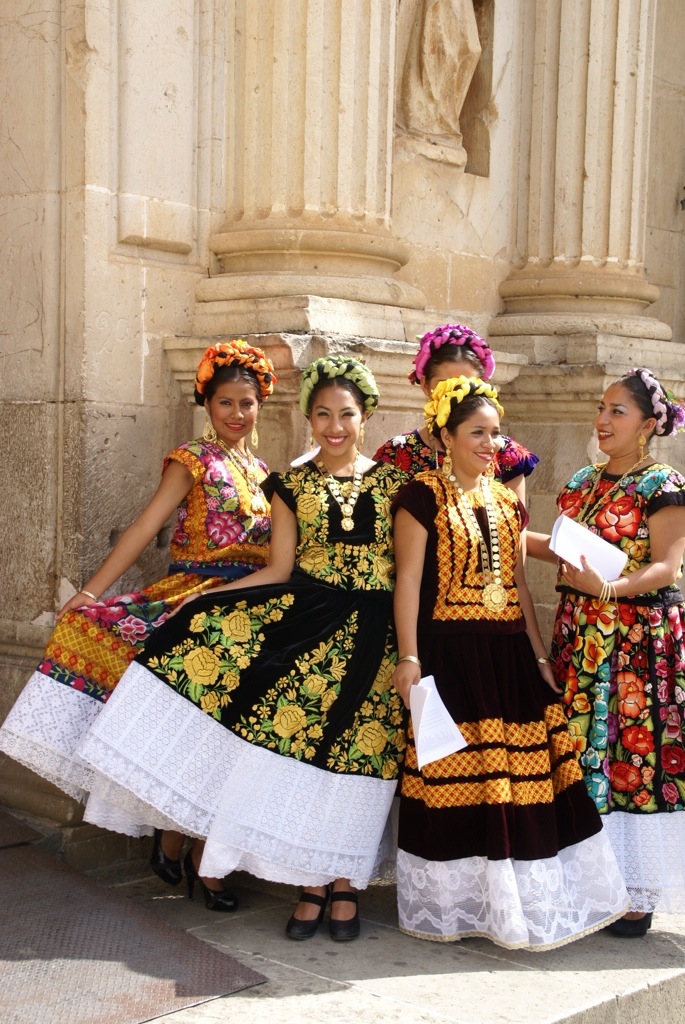
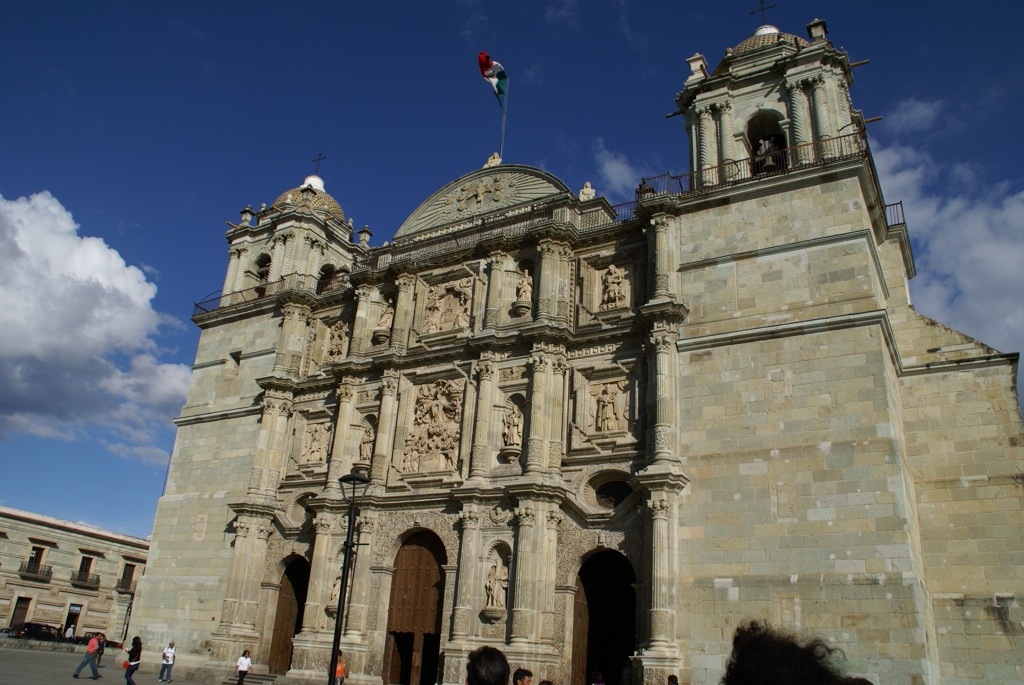
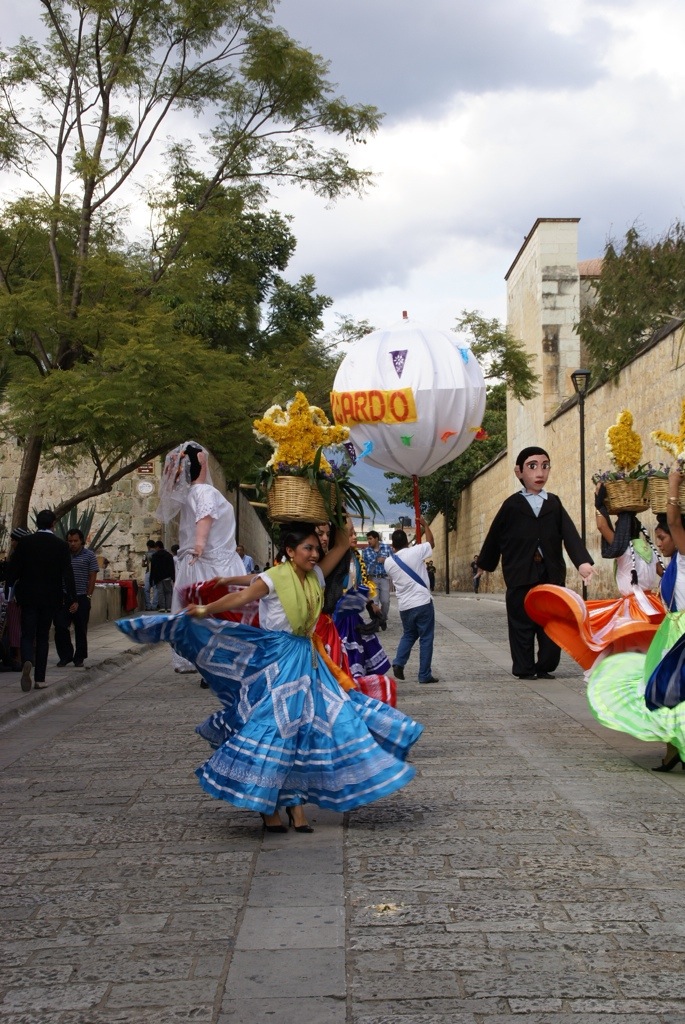
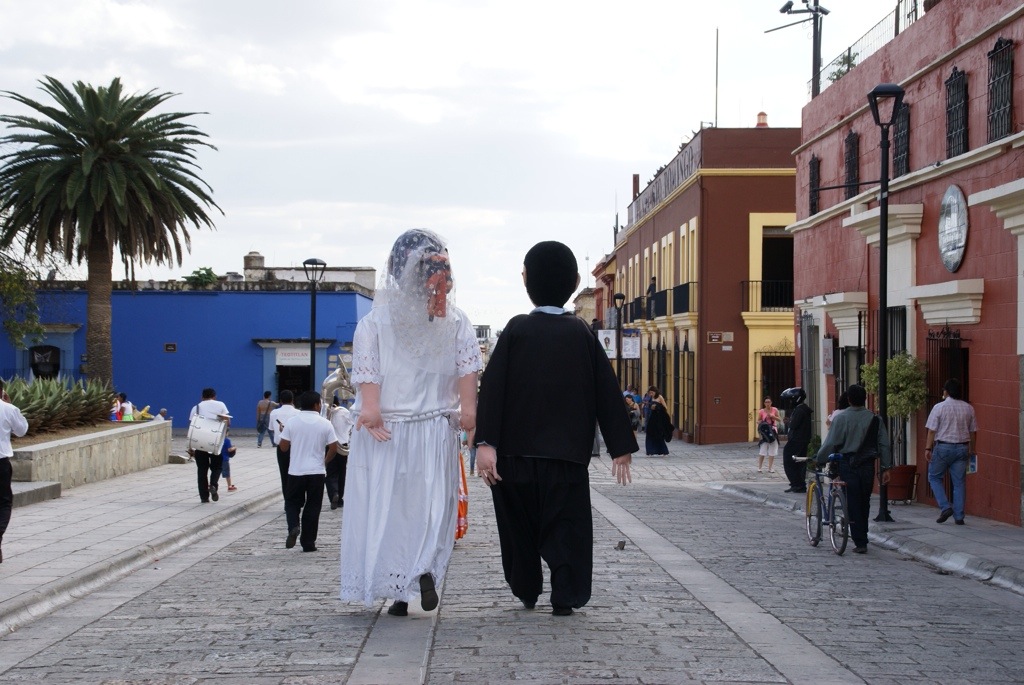
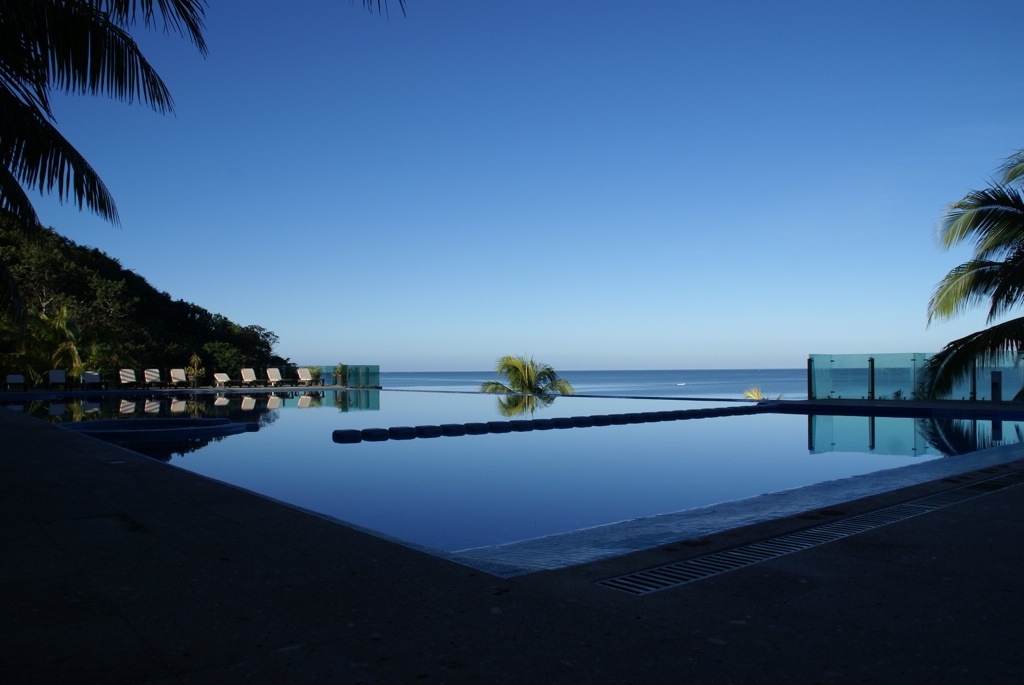


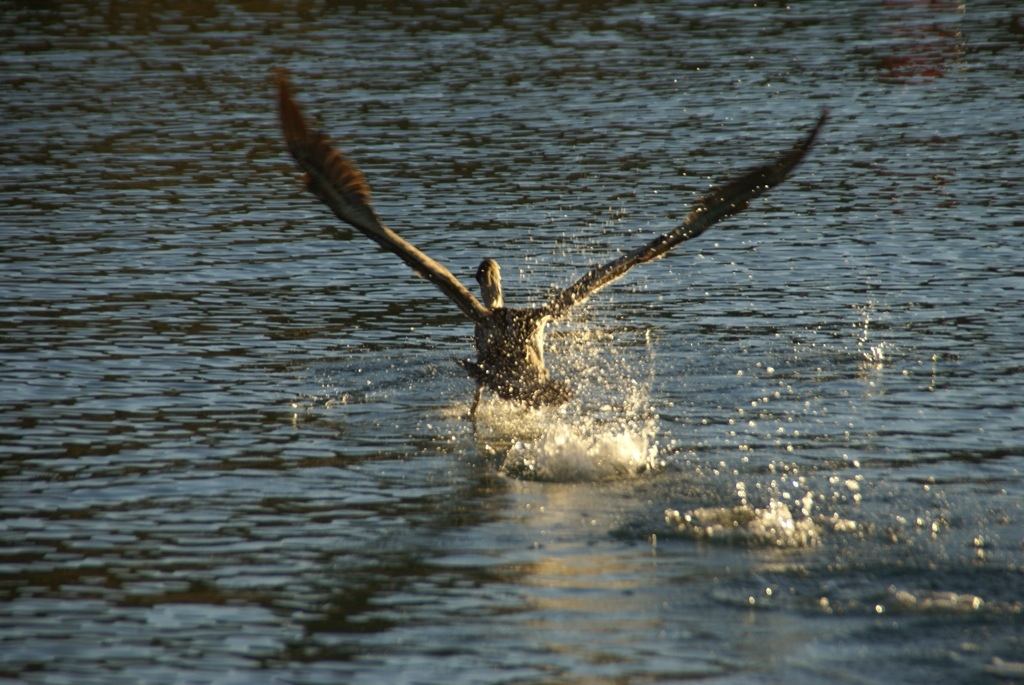 One downside was that it was about 10kms outside Campeche and down a long private road so we were not able to catch a taxi or public transport into town. Having inadvertently driven through some Mexican towns I was not keen to drive the truck into the centre. Then Gilly came up with a great idea, park the truck at the airport just outside town and catch a taxi in and out. That what we did and it worked out great.
Campeche is a lovely little colonial town on the coast. It was fortified to protect it from pirate attacks and some of the walls are still standing. It has been recognised as a world heritage sight and the houses on the streets are painted in bright pastel shades. We had a lovely walk round as well as stopping for a lunch of Yucatan specialities. The cuisine in the Yucutan is different to other parts of Mexico, the food is just so varied here.
One downside was that it was about 10kms outside Campeche and down a long private road so we were not able to catch a taxi or public transport into town. Having inadvertently driven through some Mexican towns I was not keen to drive the truck into the centre. Then Gilly came up with a great idea, park the truck at the airport just outside town and catch a taxi in and out. That what we did and it worked out great.
Campeche is a lovely little colonial town on the coast. It was fortified to protect it from pirate attacks and some of the walls are still standing. It has been recognised as a world heritage sight and the houses on the streets are painted in bright pastel shades. We had a lovely walk round as well as stopping for a lunch of Yucatan specialities. The cuisine in the Yucutan is different to other parts of Mexico, the food is just so varied here.
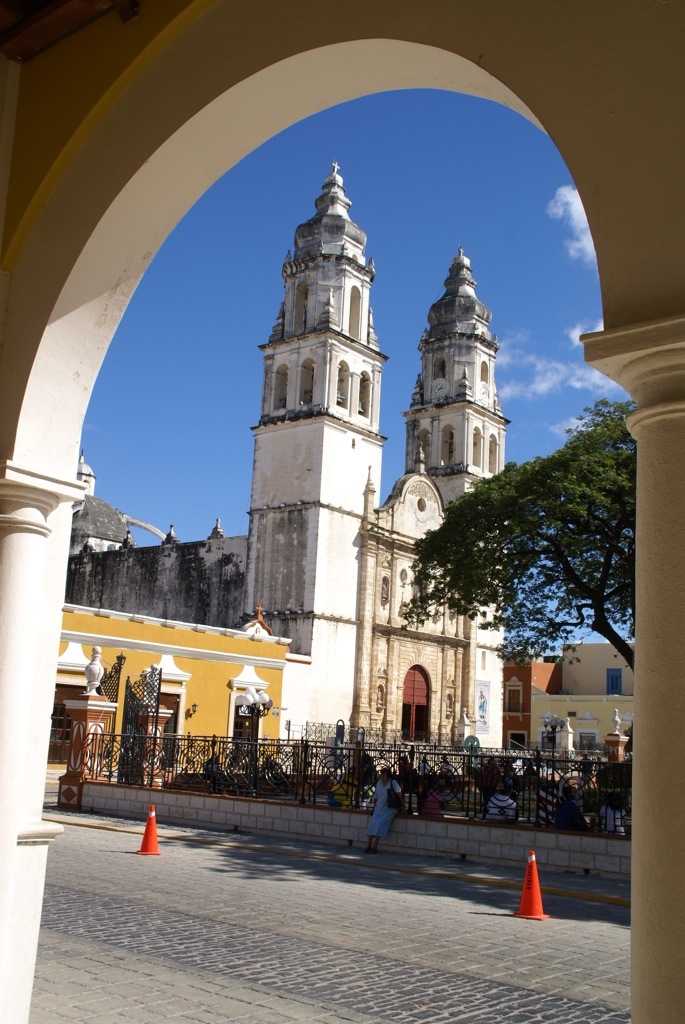
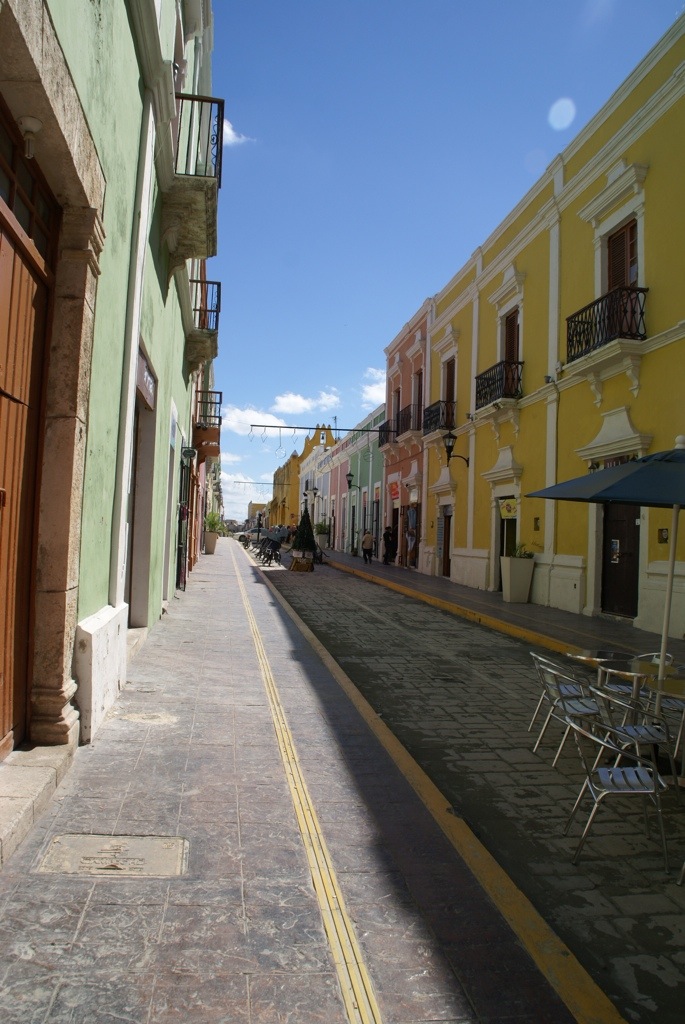
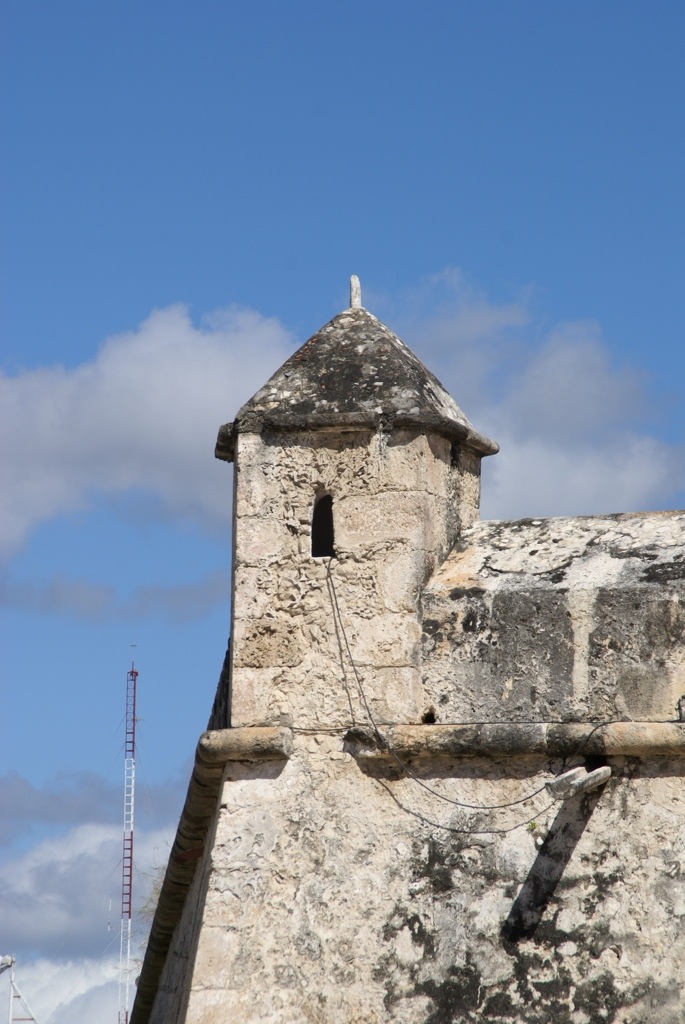 Transport here can also be interesting. Not sure this one would pass a UK inspection test!
Transport here can also be interesting. Not sure this one would pass a UK inspection test!
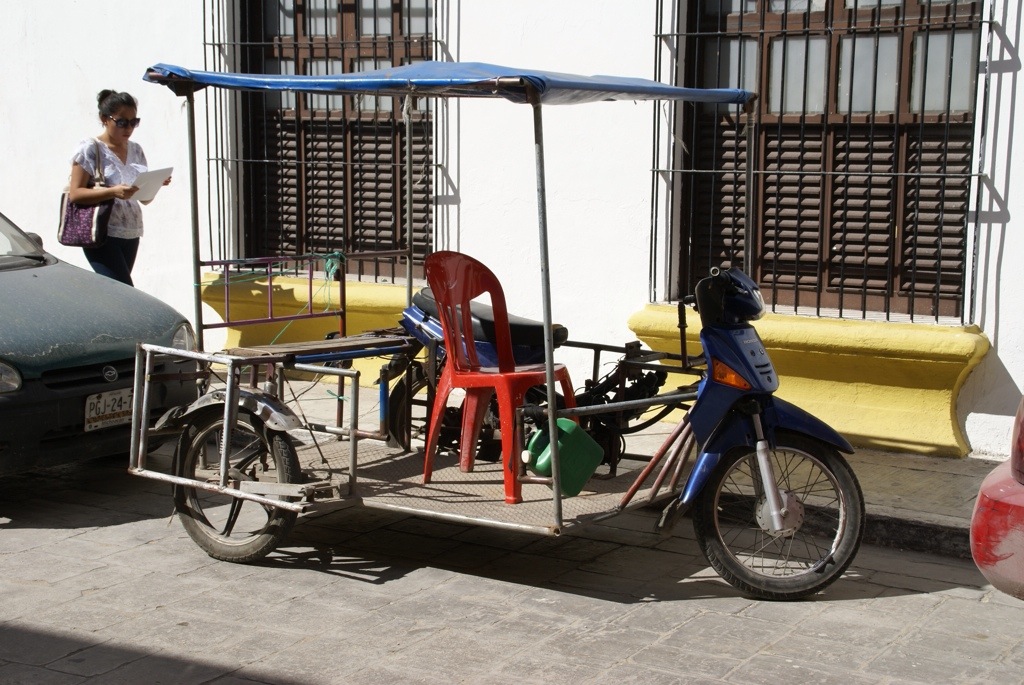 On returning to the truck we noticed that a stone had pierced the front tyre and part was still bedded in. Whilst the tyre had not gone down we thought it was probably prudent to change the wheels and put one of the spare wheels on. So the next day we were on the look out for a tyre change place and came across a hut beside the road with lots of tyres and a few small trucks on jacks. We stopped and explained our problem. Whilst the owner of the "garage" said the tyre would probably be ok we agreed to change the wheel. This was all done in 30 minutes and we were feeling pleased with ourselves. However when we pulled away something was obviously catching on the new wheel. We discovered this to be the valve which was positioned differently to on the other wheels on the truck. So back to the "garage". Off came the wheel and the valve was catching on the brake disc cover. This was annoying as this was the extra spare wheel we had bought from MAN and it didn't fit! The solution was to take the new tyre off the bad wheel and put it on the old wheel and then put the old tyre on the bad wheel. Anyway after 2 hours we were on our way and we still have a good spare on the back. The guys fitting the tyres were very friendly and took a number of photos of us and the truck and the total cost for all this work including tip was 30 dollars! Much easier than doing it all myself.
On returning to the truck we noticed that a stone had pierced the front tyre and part was still bedded in. Whilst the tyre had not gone down we thought it was probably prudent to change the wheels and put one of the spare wheels on. So the next day we were on the look out for a tyre change place and came across a hut beside the road with lots of tyres and a few small trucks on jacks. We stopped and explained our problem. Whilst the owner of the "garage" said the tyre would probably be ok we agreed to change the wheel. This was all done in 30 minutes and we were feeling pleased with ourselves. However when we pulled away something was obviously catching on the new wheel. We discovered this to be the valve which was positioned differently to on the other wheels on the truck. So back to the "garage". Off came the wheel and the valve was catching on the brake disc cover. This was annoying as this was the extra spare wheel we had bought from MAN and it didn't fit! The solution was to take the new tyre off the bad wheel and put it on the old wheel and then put the old tyre on the bad wheel. Anyway after 2 hours we were on our way and we still have a good spare on the back. The guys fitting the tyres were very friendly and took a number of photos of us and the truck and the total cost for all this work including tip was 30 dollars! Much easier than doing it all myself.
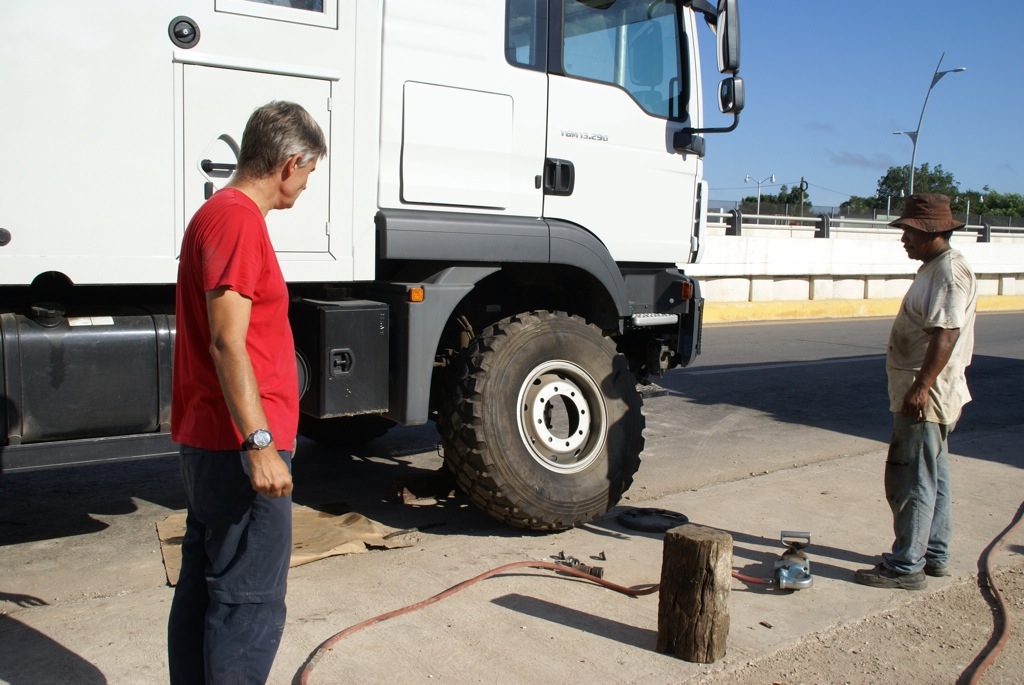
 Despite having to do the tyre change we still reached our next stop at Uxmal in time for lunch. Here we camped right next to the ruins on a grassy patch next to the car park. Whilst there are no real facilities, they let you camp there for only a small fee. This meant we were able to visit the sound and light show in the evening. Alisha and Lucy did not like the noise and to be honest it was a bit boring but the ruins did look good in the lights.
Despite having to do the tyre change we still reached our next stop at Uxmal in time for lunch. Here we camped right next to the ruins on a grassy patch next to the car park. Whilst there are no real facilities, they let you camp there for only a small fee. This meant we were able to visit the sound and light show in the evening. Alisha and Lucy did not like the noise and to be honest it was a bit boring but the ruins did look good in the lights.
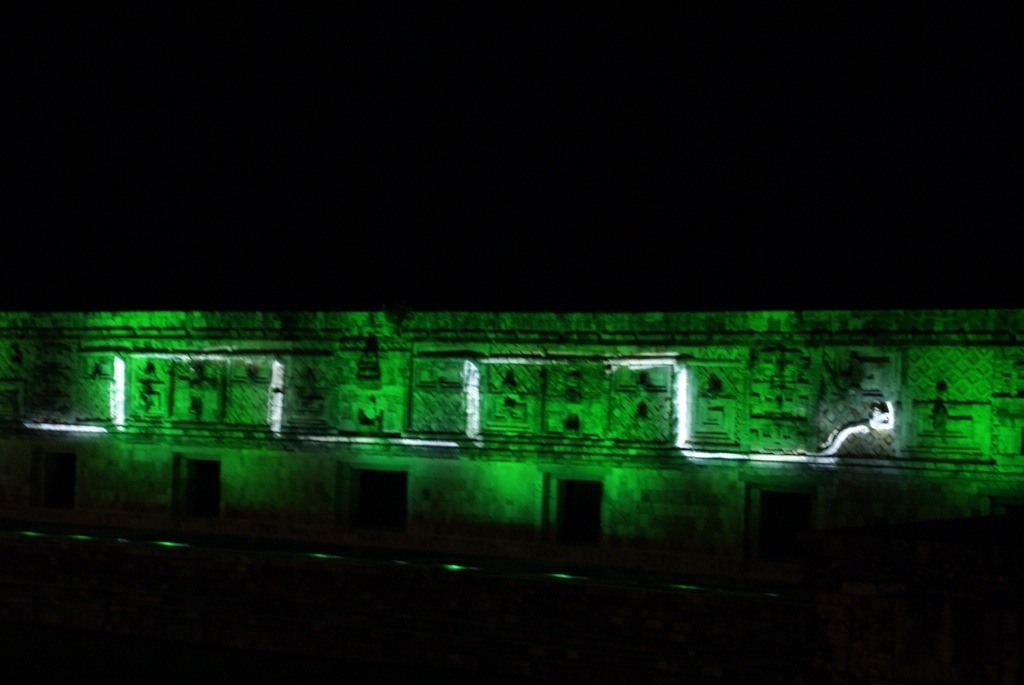
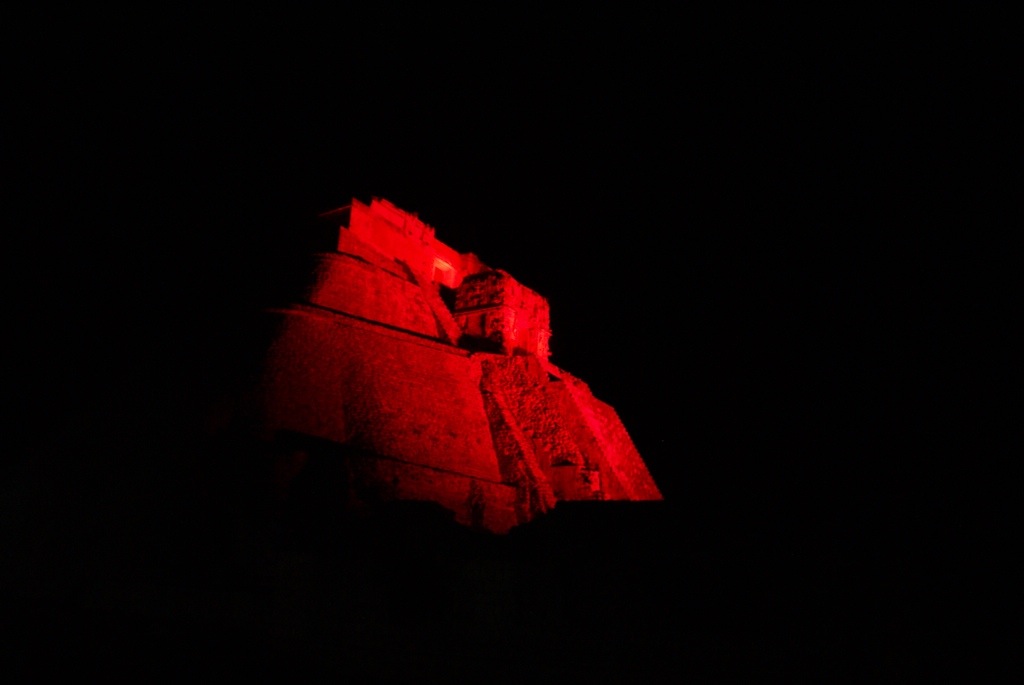 Uxmal is one of the most important Mayan ruins and has some of the best decorations and carvings. It was in its heyday in about 900AD but was then abandoned. The main restored ruins are a temple, the nuns courtyard and the giant pyramid.
Uxmal is one of the most important Mayan ruins and has some of the best decorations and carvings. It was in its heyday in about 900AD but was then abandoned. The main restored ruins are a temple, the nuns courtyard and the giant pyramid.
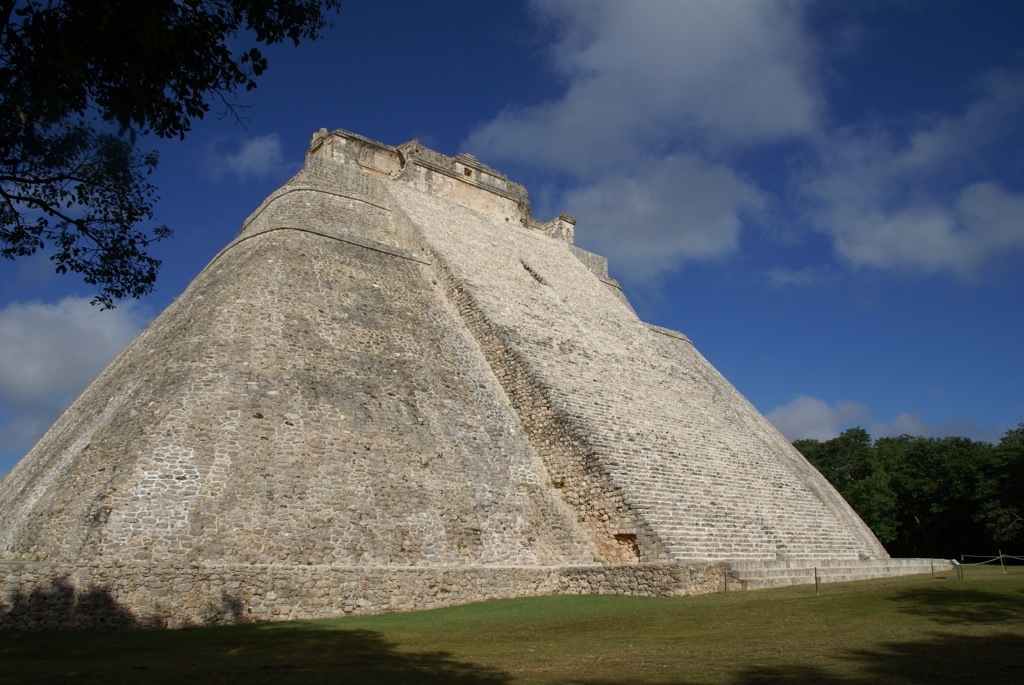
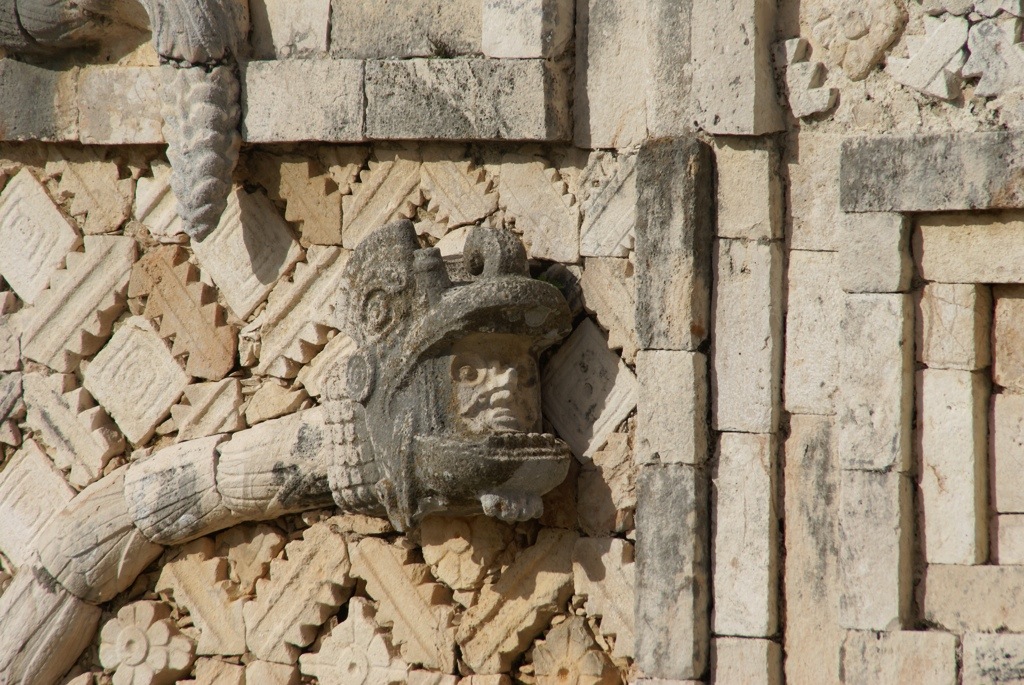
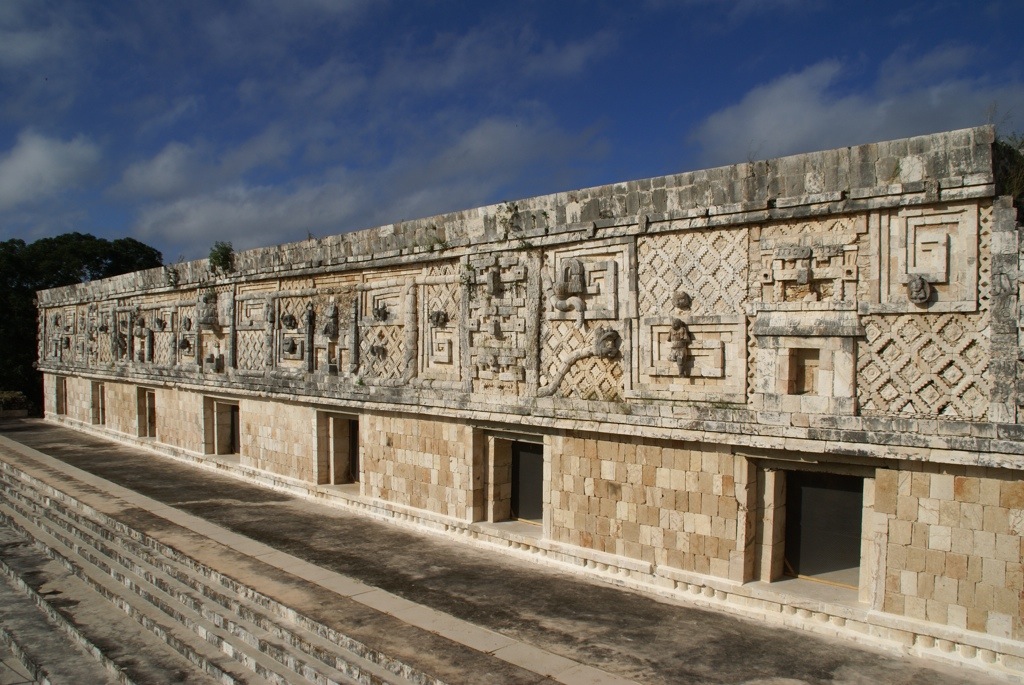
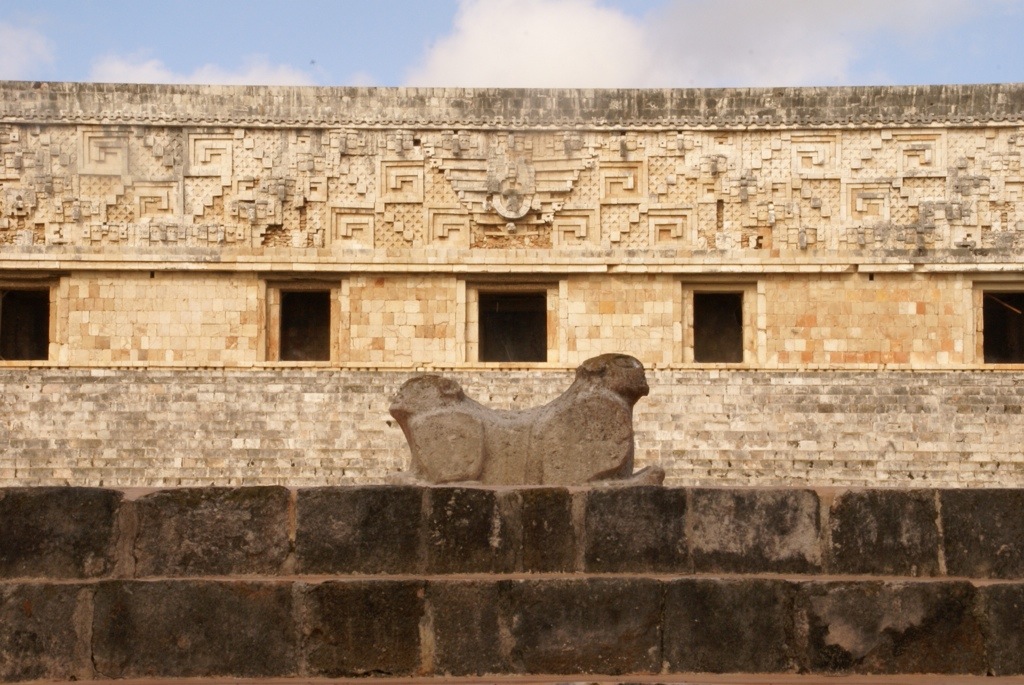
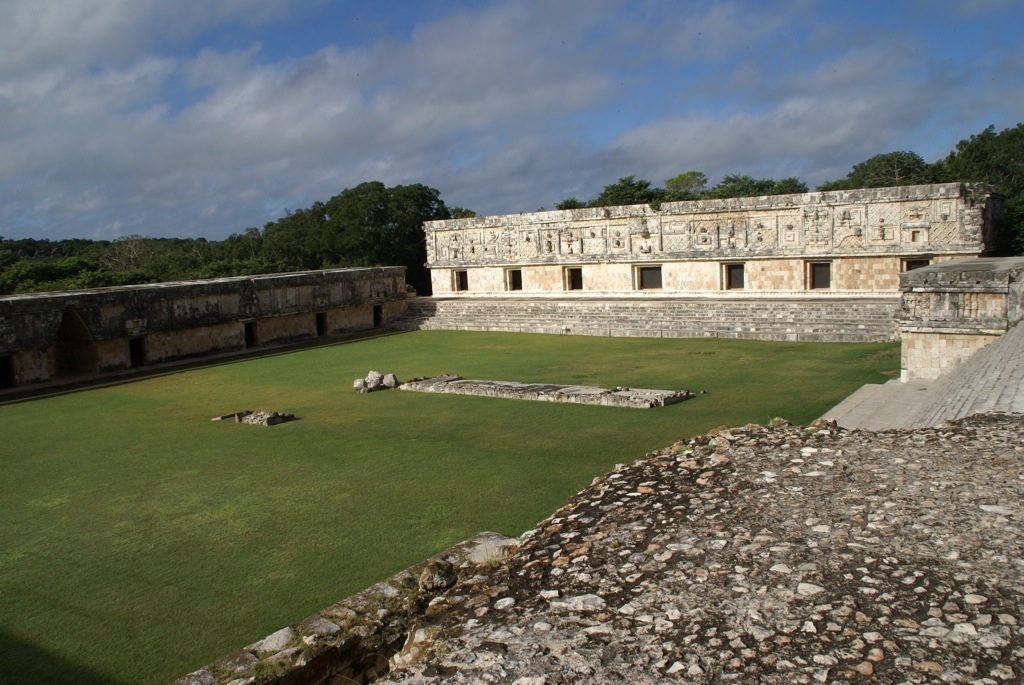
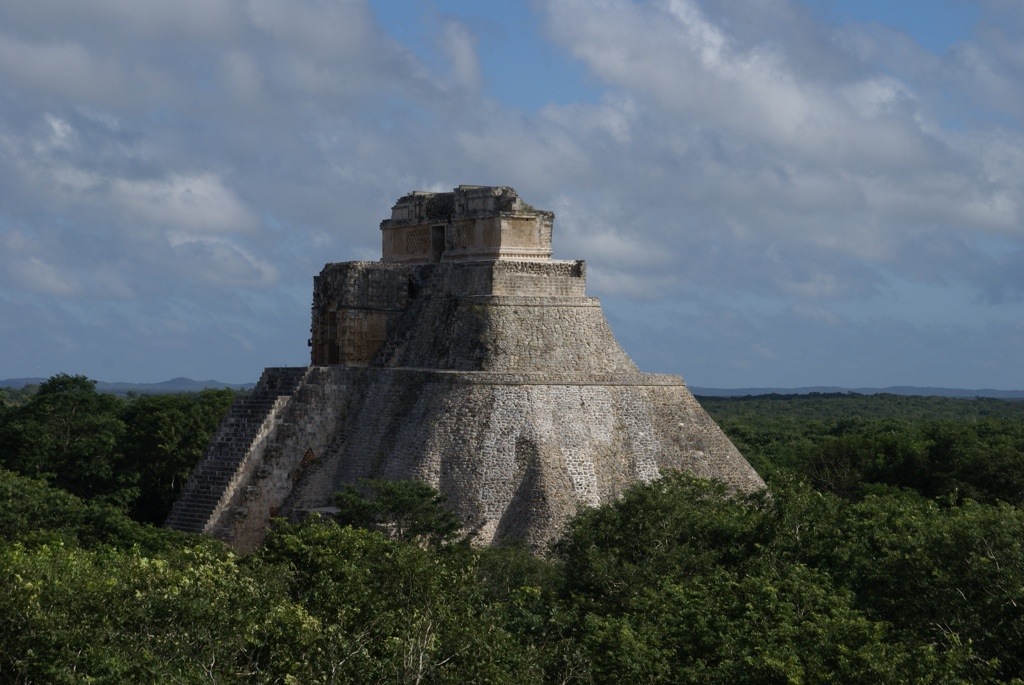 We climbed to the top of the giant pyramid, which was easier than going back down!
We climbed to the top of the giant pyramid, which was easier than going back down!
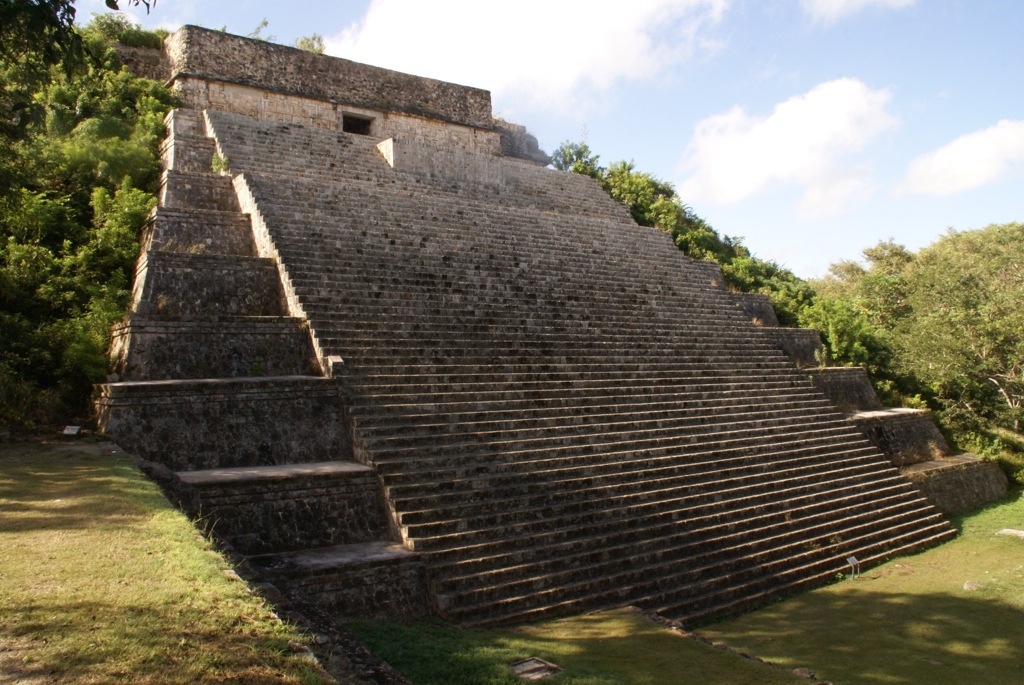
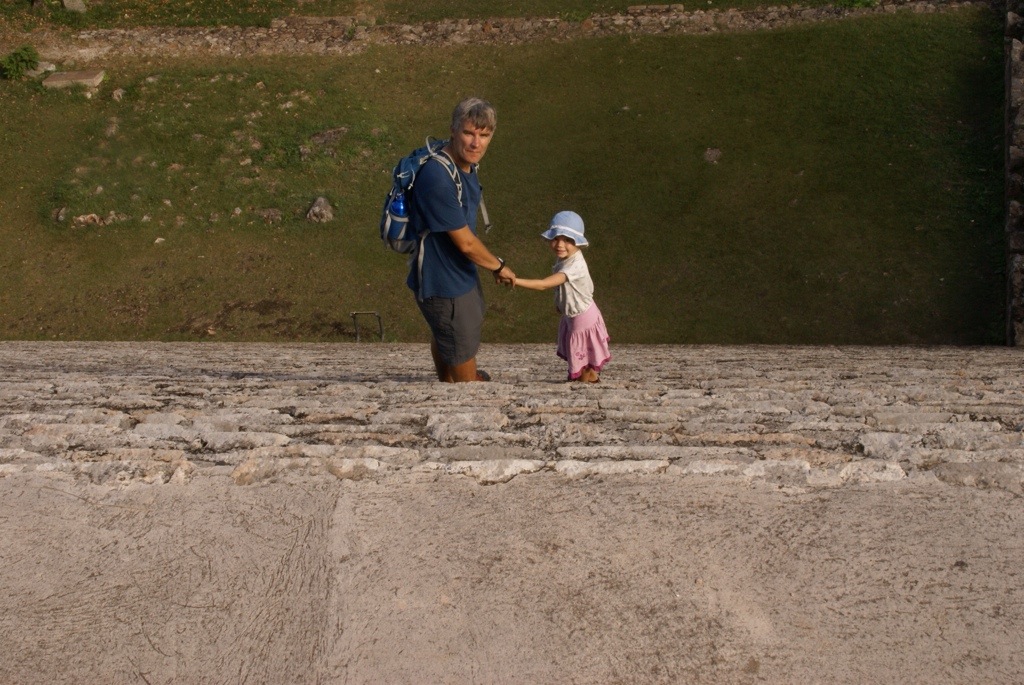 After Uxmal we drove the short distance to Merida where we camped in a large RV campground (virtually deserted again). The campground was next to an upmarket shopping gallery called "Liverpool" of all names. We headed off to the shops as it had been ages since we had been in such a place and took the opportunity for all of us to have our haircut. Alisha and Lucy were then excited to see a running sushi restaurant like the one they loved in Prague, so it was sushi for tea.
The next day we headed into the centre of Merida. Merida is the capital of the Yucutan and as such it has all the hallmarks of a city established following the Spanish conquest. A Cathedral, main square and government buildings around the square. The area is also famous for sisal and the people who became rich with this trade built grand mansions on a large boulevard in town.
After Uxmal we drove the short distance to Merida where we camped in a large RV campground (virtually deserted again). The campground was next to an upmarket shopping gallery called "Liverpool" of all names. We headed off to the shops as it had been ages since we had been in such a place and took the opportunity for all of us to have our haircut. Alisha and Lucy were then excited to see a running sushi restaurant like the one they loved in Prague, so it was sushi for tea.
The next day we headed into the centre of Merida. Merida is the capital of the Yucutan and as such it has all the hallmarks of a city established following the Spanish conquest. A Cathedral, main square and government buildings around the square. The area is also famous for sisal and the people who became rich with this trade built grand mansions on a large boulevard in town.


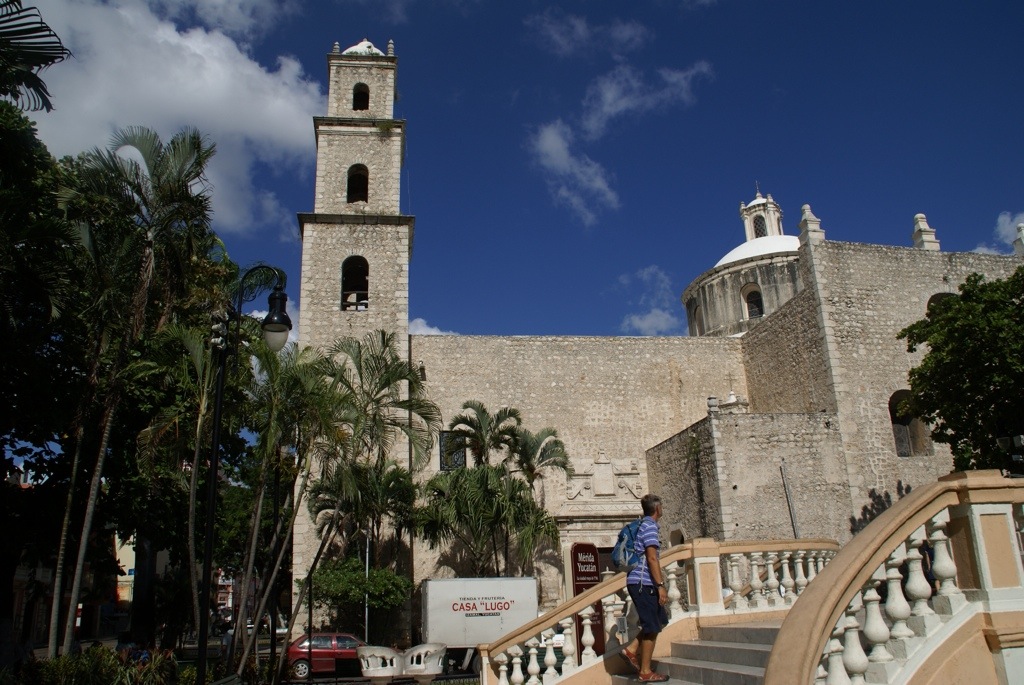
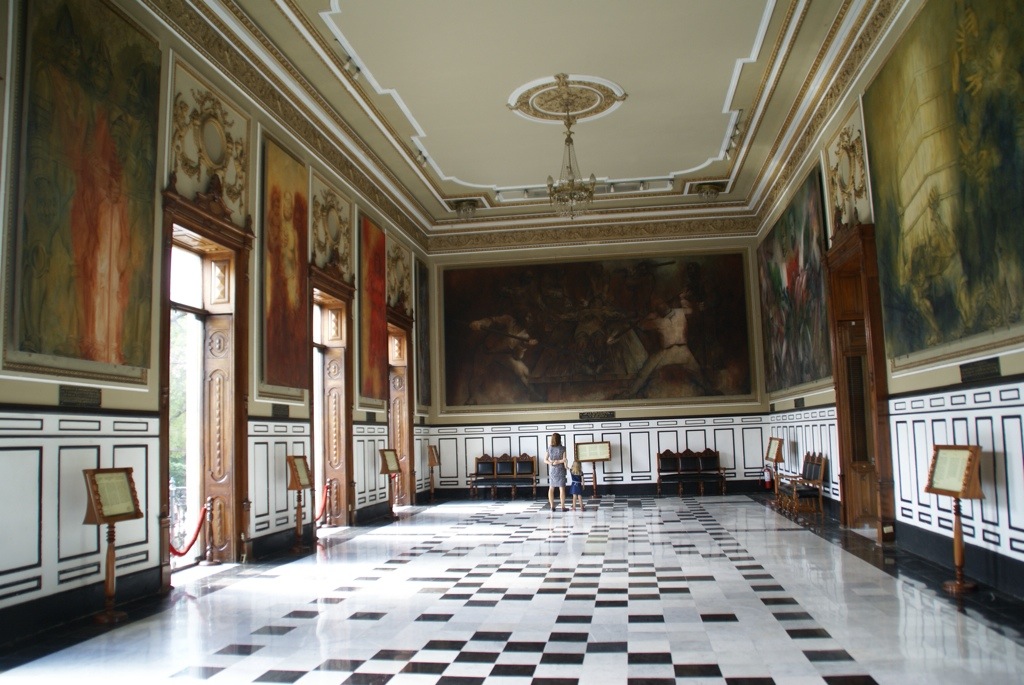 We had another lovely lunch where the ladies were making the tortillas by hand in the restaurant.
We had another lovely lunch where the ladies were making the tortillas by hand in the restaurant.
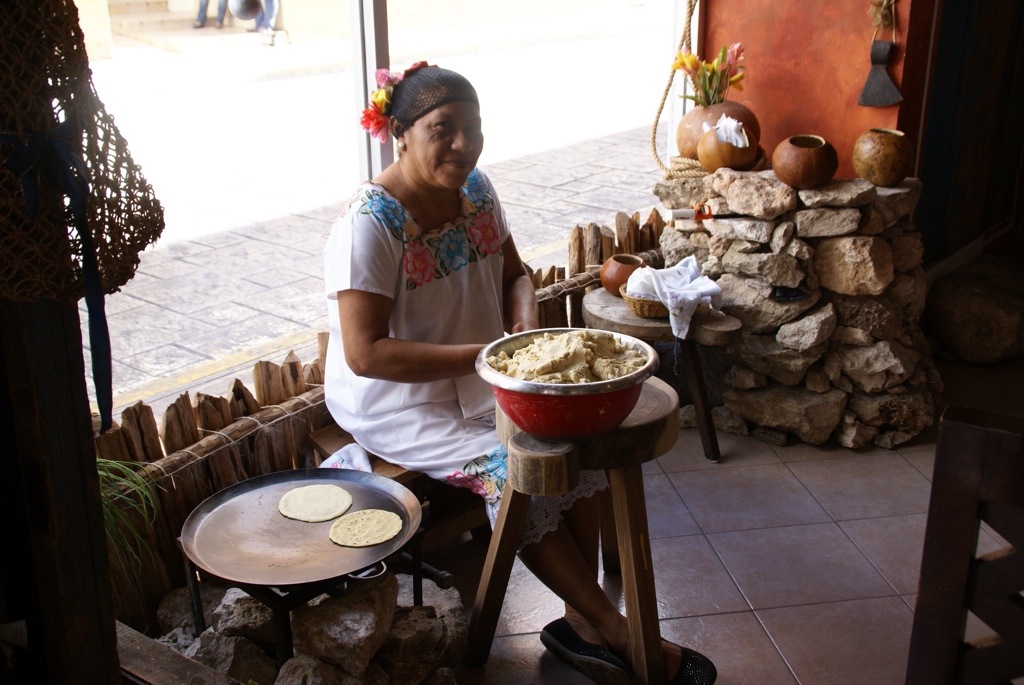 And there is no avoiding it. Christmas is coming.
And there is no avoiding it. Christmas is coming.
